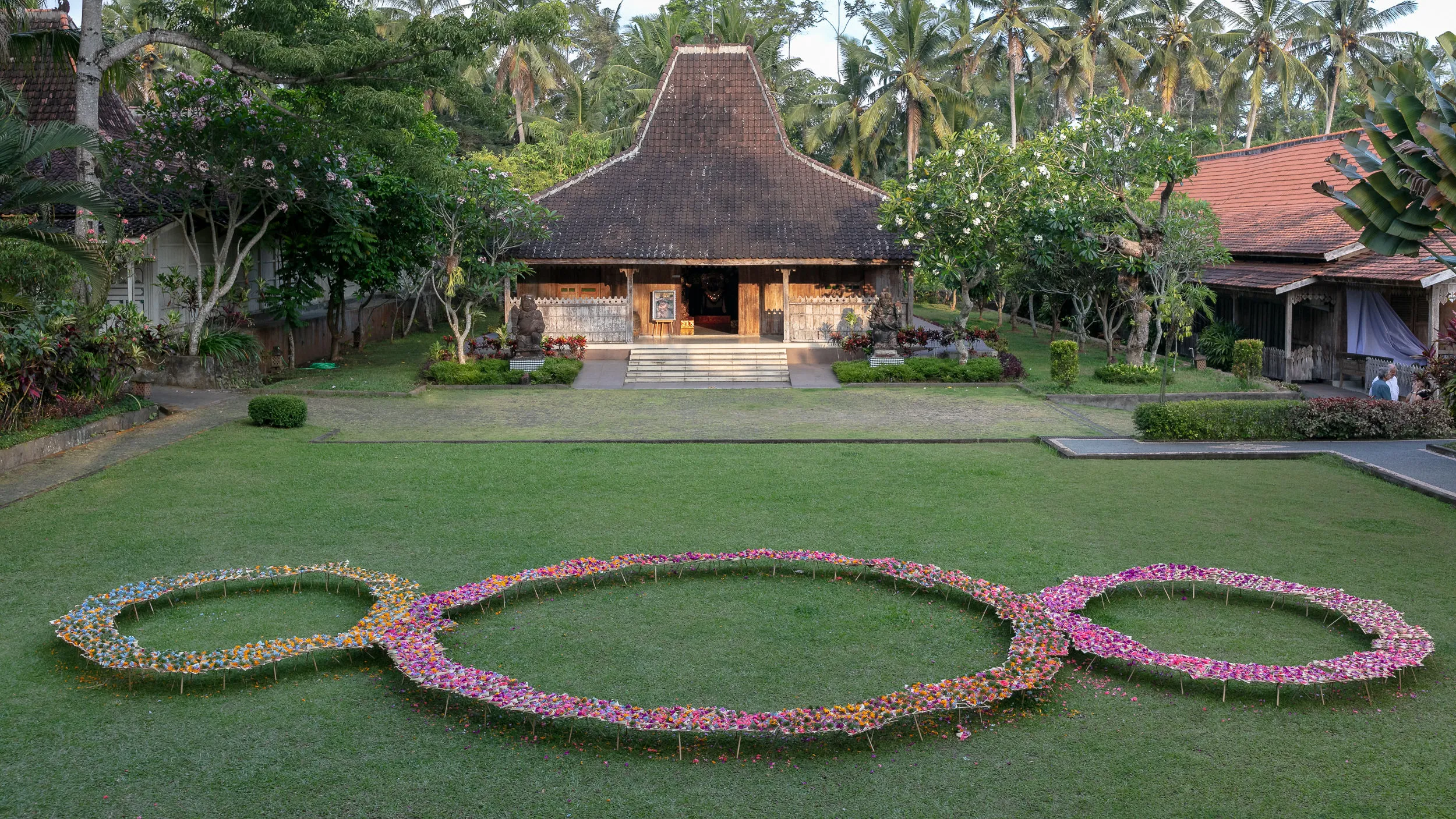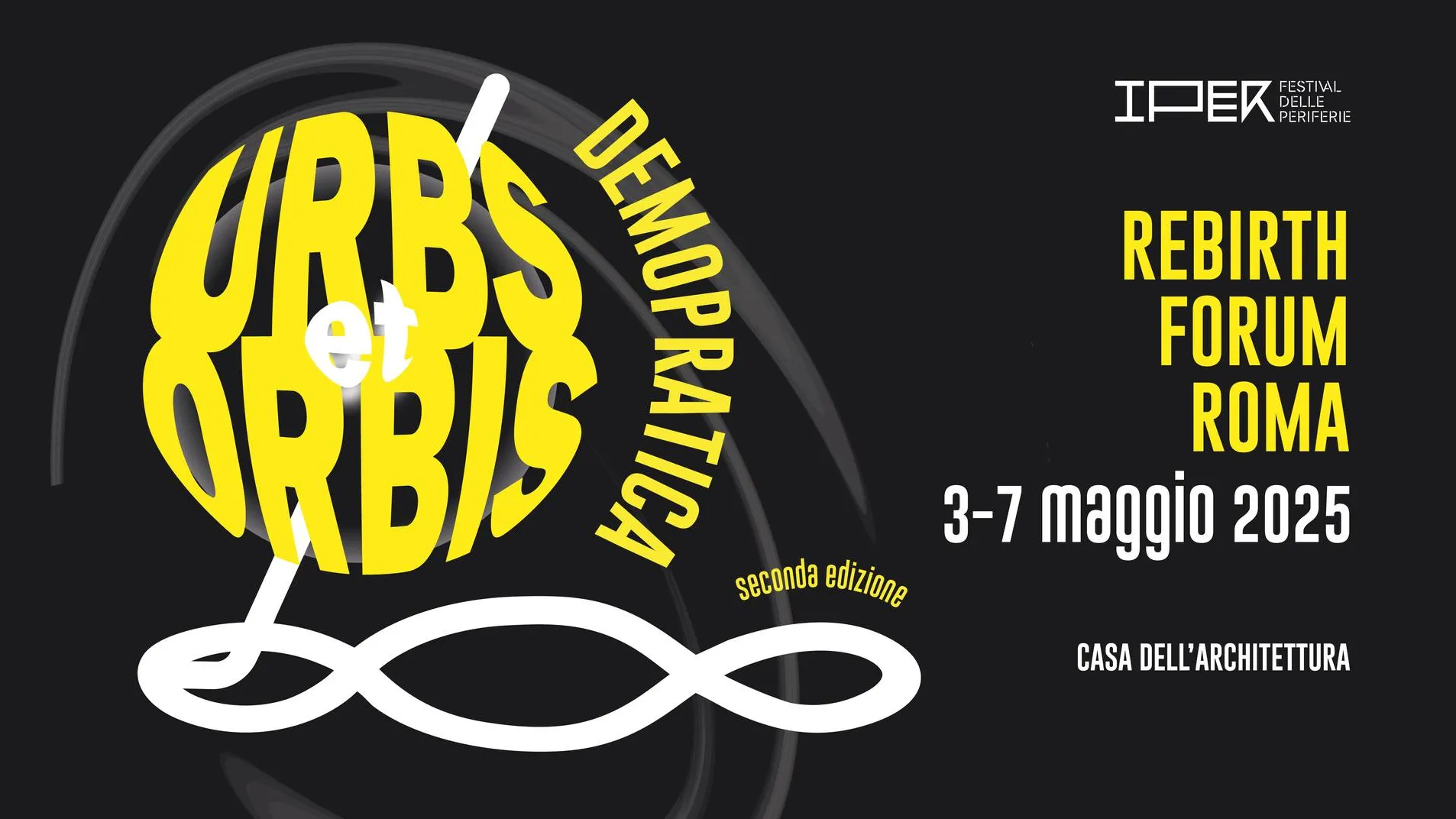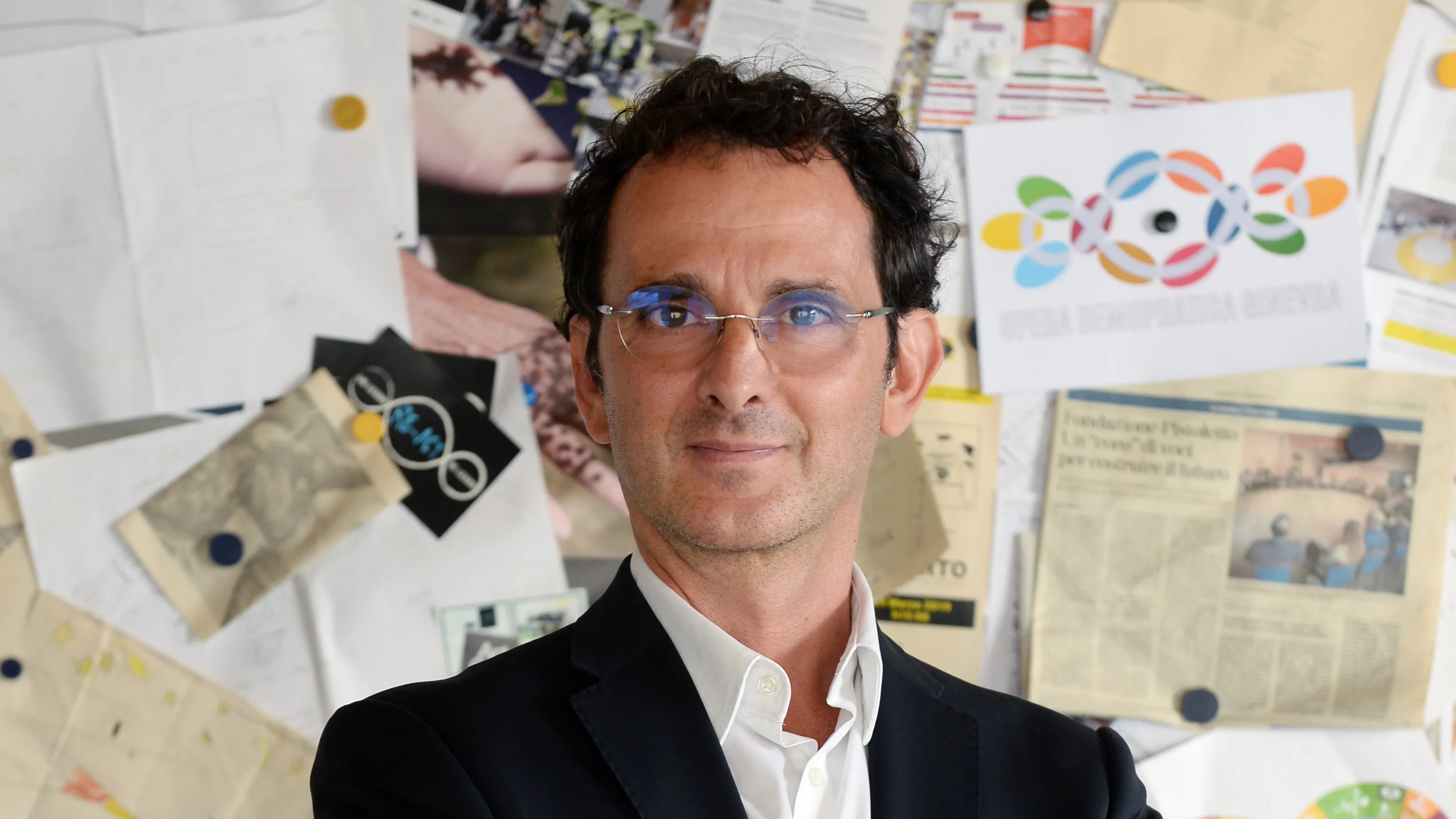What can we
help you find?
Ricerche suggerite
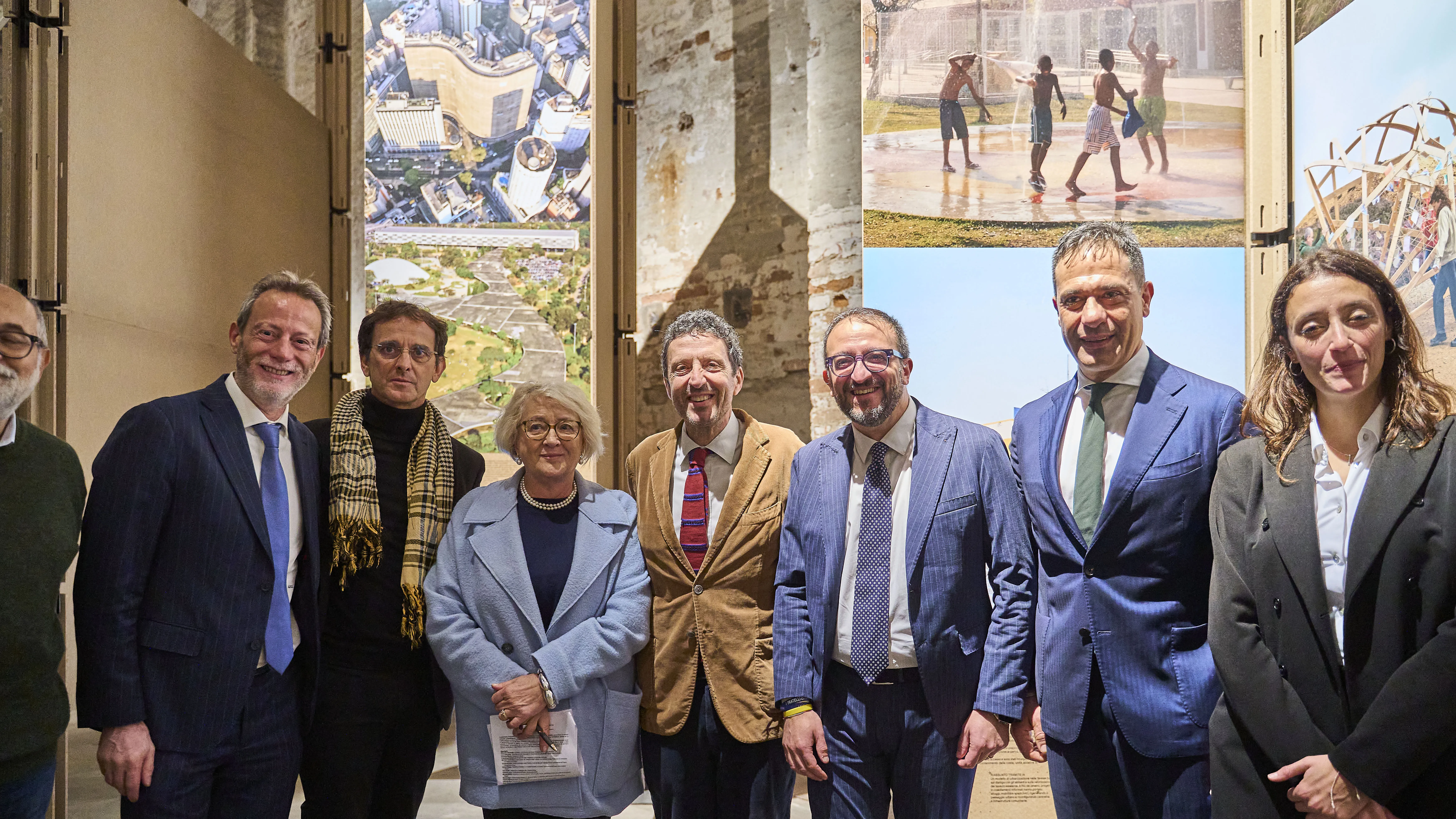
"Intelli_Gens Demopratica", When Art Rules: Practices and Perspectives on Demopraxy at the 2025 Architecture Biennale
Dialogues and (sharing) visions for a new State of the Art between art, citizenship, and demopractic innovation: on October 21, 2025, as part of the "GENS Public Programme" of the 19th International Architecture Exhibition of the Venice Biennale, a day of study and discussion was held at the Speakers' Corner of the Corderie dell'Arsenale, dedicated to demopractic works as tools for civic, social, and cultural regeneration. The event brought together artists, Rebirth/Third Paradise ambassadors, institutions, scholars, administrators, and activists to explore new forms of harmonious and sustainable coexistence. "We brought to the Biennale," stated Paolo Naldini, director of Cittadellarte, "a method for generating collective intelligence that is already in practice in several cities around the world."
From Italy to Korea, from Biella to Havana and Geneva, from Rome to Nova Gorica/Gorizia, passing through Busto Arsizio, Scanno, and L'Aquila: Cittadellarte has networked and spotlighted, in the prestigious context, it goes without saying, of the 19th International Architecture Exhibition of the Venice Biennale, those who are changing the world within their own communities and territories. This catchphrase, "changing the world," might raise eyebrows: it's an overused definition, often conducive to utopia rather than practice. Yet, those who attended yesterday's event, hosted by the Pistoletto Foundation as part of the GENS Public Programme, cannot help but have an encouraging outlook—even if they overdo it with the caution of the tone—generated by the mosaic of interventions that shaped the day. Intelli_Gens Demopratica, the title of the initiative, highlighted cases and stories at the Speakers' Corner at the Corderie dell'Arsenale, different in scope and location, yet finding inspiration, a bridge, and, above all, a common method in Demopraxy. What's more, what struck those present was not only the emotional and deeply felt narratives of each speaker, but the results that Demopractic projects have achieved so far. To showcase some of the more than 40 projects launched around the world over 10 years of work, the meeting brought together artists, scholars, administrators, and activists in a dialogue that intertwined art, architecture, politics, and shared practices, to explore new forms of harmonious and sustainable coexistence. Let's discover what emerged from the program, moderated by Michele Cerruti But, Course Leader of the Three-Year Program in Public Art at Accademia Unidee and Professor of Urban Planning at the Polytechnic University of Turin, which was divided into three sessions—Impacts, Challenges, Projects—and enriched by four keynote speeches dedicated to key themes such as the value of political emotions in collective life, art as social infrastructure, and the creation of active communities for a renewed democracy.
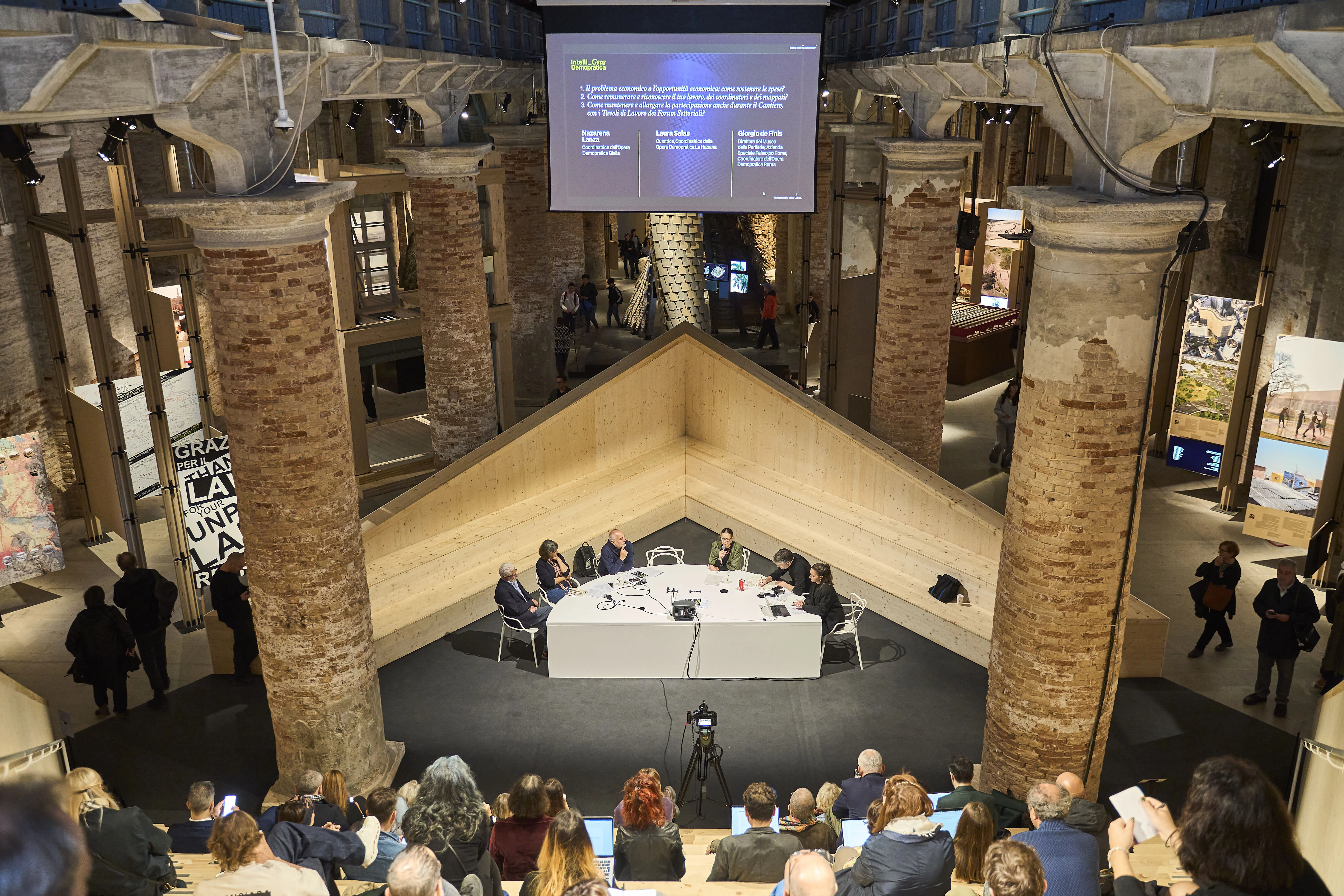
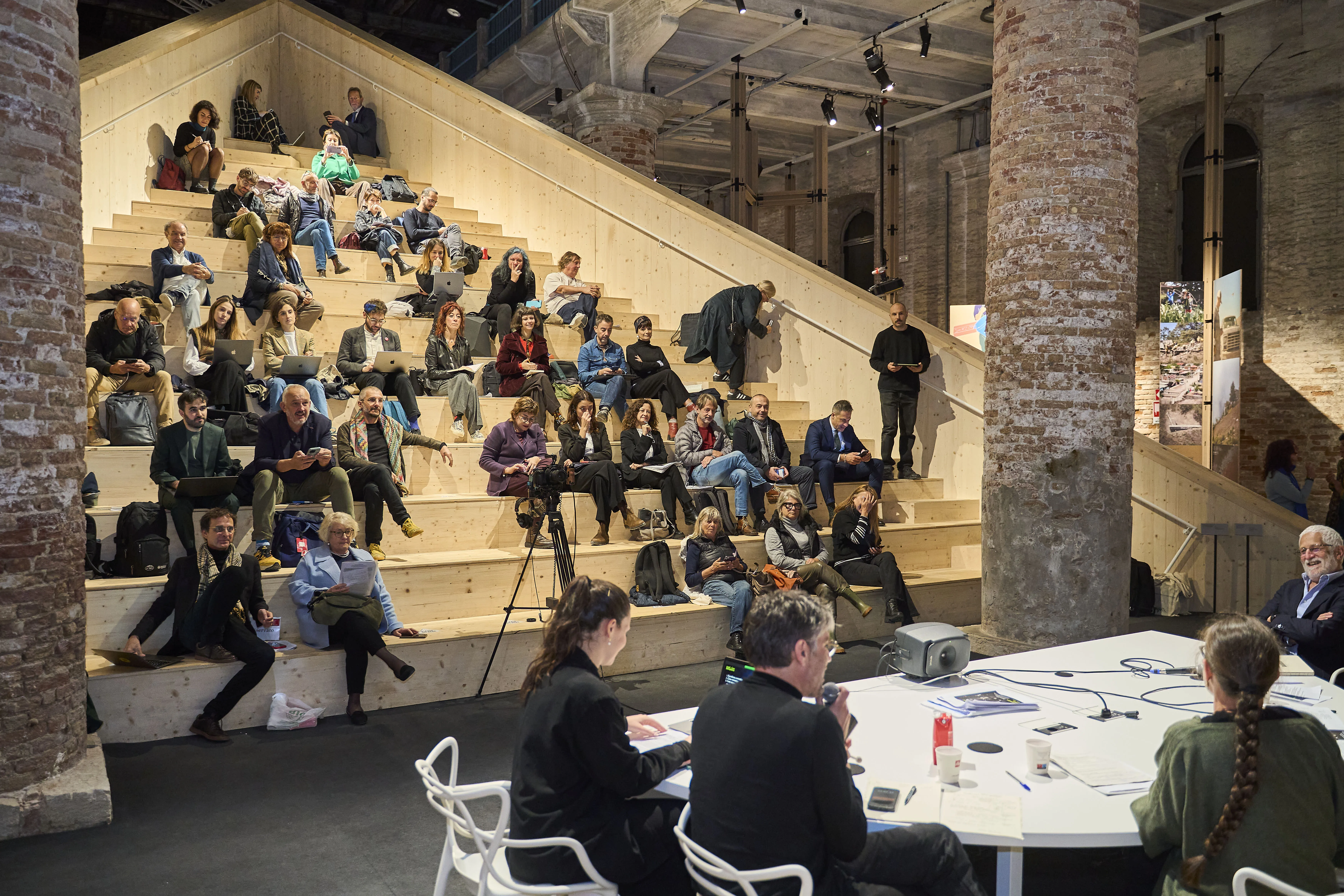
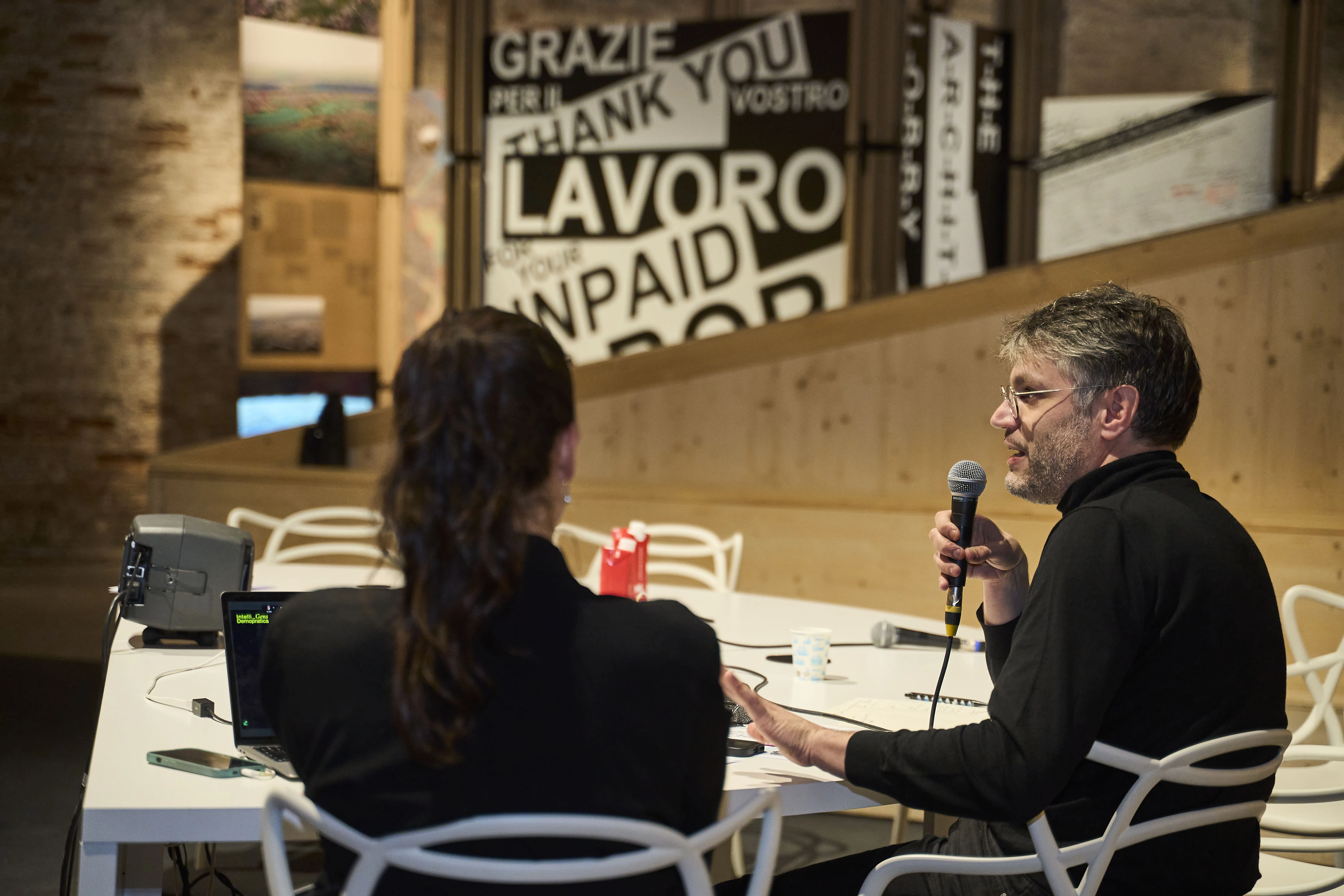
Giuliana Setari raises the curtain
The day was opened by Giuliana Setari, president of Cittadellarte, who emphasized the symbolic and prospective value of this edition of the Architecture Biennale, calling it "one of the most beautiful to date, capable of offering a vision of the future that reassures and inspires us." In her speech, she recalled how the Terzo Paradiso installation, located at the entrance to the Biennale, represents a vision of hope and transformation, a concrete sign of collective participation and faith in the possibilities of social change. "This work," she explained, "is the fruit of a shared effort, in which many people participated, a symbol of a community that recognizes art as a regenerative force." Offering heartfelt thanks to the mayors of the Italian cities present, Setari then recalled how Cittadellarte's presence at the Biennale has received significant recognition: the "Statodellarte" project has been included in the Intelli_Gens Canon program, among the examples of practices worth knowing and learning from. In his speech, he briefly recounted the Foundation's history and mission, recalling that "over twenty-five years ago, when Cittadellarte was founded, it was not at all common to talk about peace, culture, and sustainability on a daily basis".
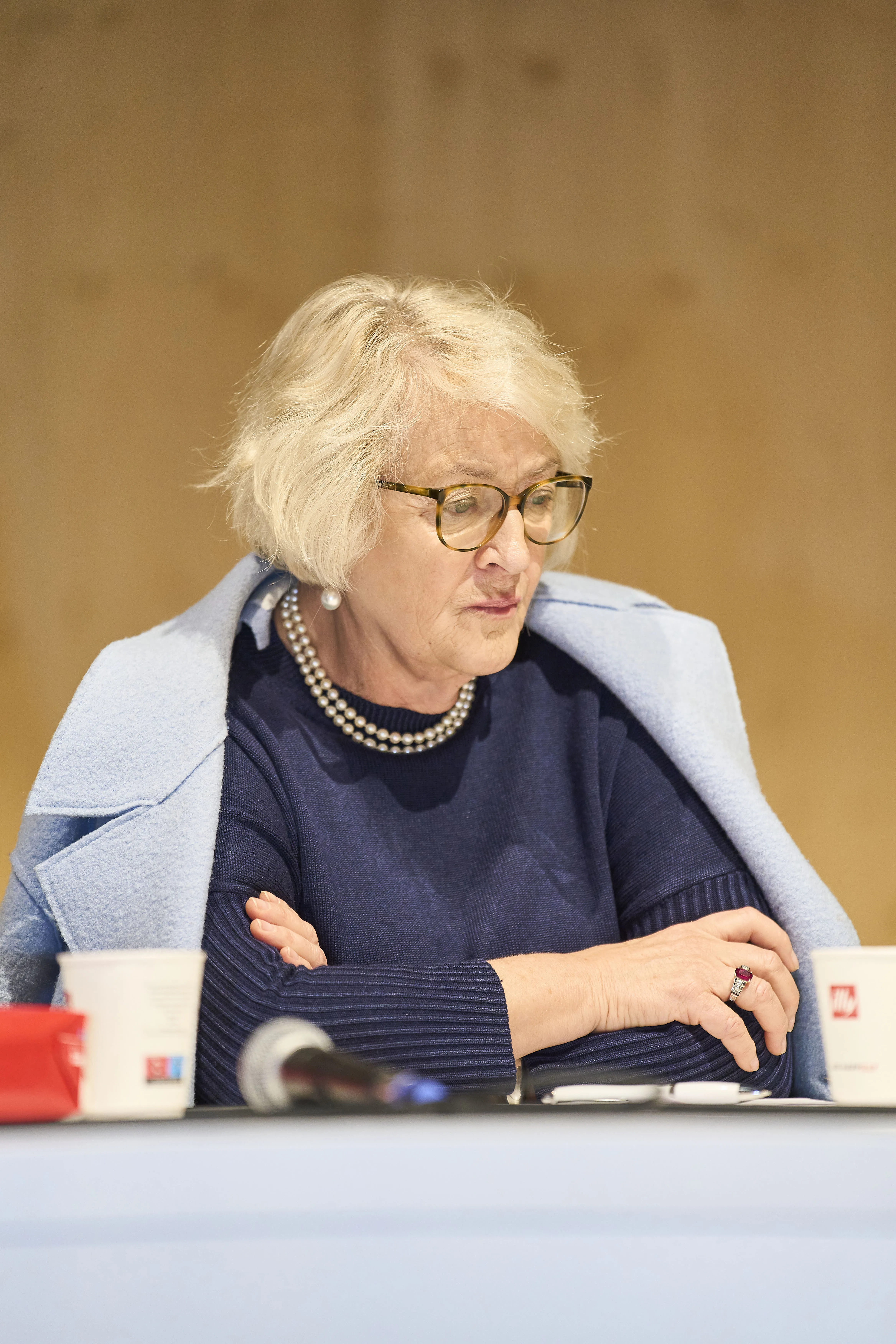
The Voice of Politics
Introducing the study day was Michele Cerruti But, who recalled how the theme of democracy has been a constant theme in the Foundation's research for years. "I remember one of the UNIDEE Residency Programs a few years ago, where the word 'democracy' sparked a heated debate," he said. "Some artists from conflict-ridden countries asserted that it's not uncommon to drop bombs in the name of democracy. From that discussion, a collective reflection arose, together with Paolo Naldini and Michelangelo Pistoletto: perhaps democracy has its weaknesses, and needs to be rethought in its practical dimension." From there, the Demopraxy project took shape, which over time has evolved into a method and an international network of collaborations. Cerruti But then opened the day with an invitation to "re-discuss the very word 'democracy' and imagine its renewal together." This was followed by official greetings from representatives of the territories involved in the demopractic projects, starting with the mayor of L'Aquila, Pierluigi Biondi, who shared the story of a city that has made reconstruction a practice of concrete democracy: "We don't question democracy; we apply it as best we can so that it doesn't become devoid of substance. Our experience, especially after the earthquake, was a major form of unconscious demopraxy." Biella's deputy mayor, Sara Gentile, emphasized the city's pride in participating in an event of such international importance, recalling its deep connection with Cittadellarte and the Terzo Paradiso. "We are at the most important site of contemporary architectural debate," she stated, "and it is a source of pride to know that a Biella native like Michelangelo Pistoletto conveys messages of unity between nature and artifice. With Biella's candidacy for the UNESCO Creative Cities network, we have made that symbol our own: creativity doesn't belong only to artists and architects, but can inspire every civil and administrative process." The mayor of Scanno, Giovanni Mastrogiovanni, spoke of a community that has chosen to get personally involved: "Ensuring all the tools of democracy is not easy," he stated. "With the Terzo Paradiso project—editor's note: referring to an installation of the symbol that will be built in the city—we have initiated not only an urban regeneration process, but also a cultural journey. Our communities must regenerate their way of thinking, and this is the work we are doing with Cittadellarte." Finally, the president of the Province of Biella, Emanuele Ramella Pralungo, offered a lucid reflection on administrative responsibility and the need to reconnect art, architecture, and politics. "In recent years, the dialogue between art and administration has been lost: too often, we have acted according to utilitarian logic. The task of administrators must be to heal these fractures." Concluding, he appealed to the audience: "One of the ills of our society is the loss of a sense of participation. Democracy is fragile because citizens have lost their duty to be there. Participate, challenge administrators: we need it, because too often we feel alone in power."
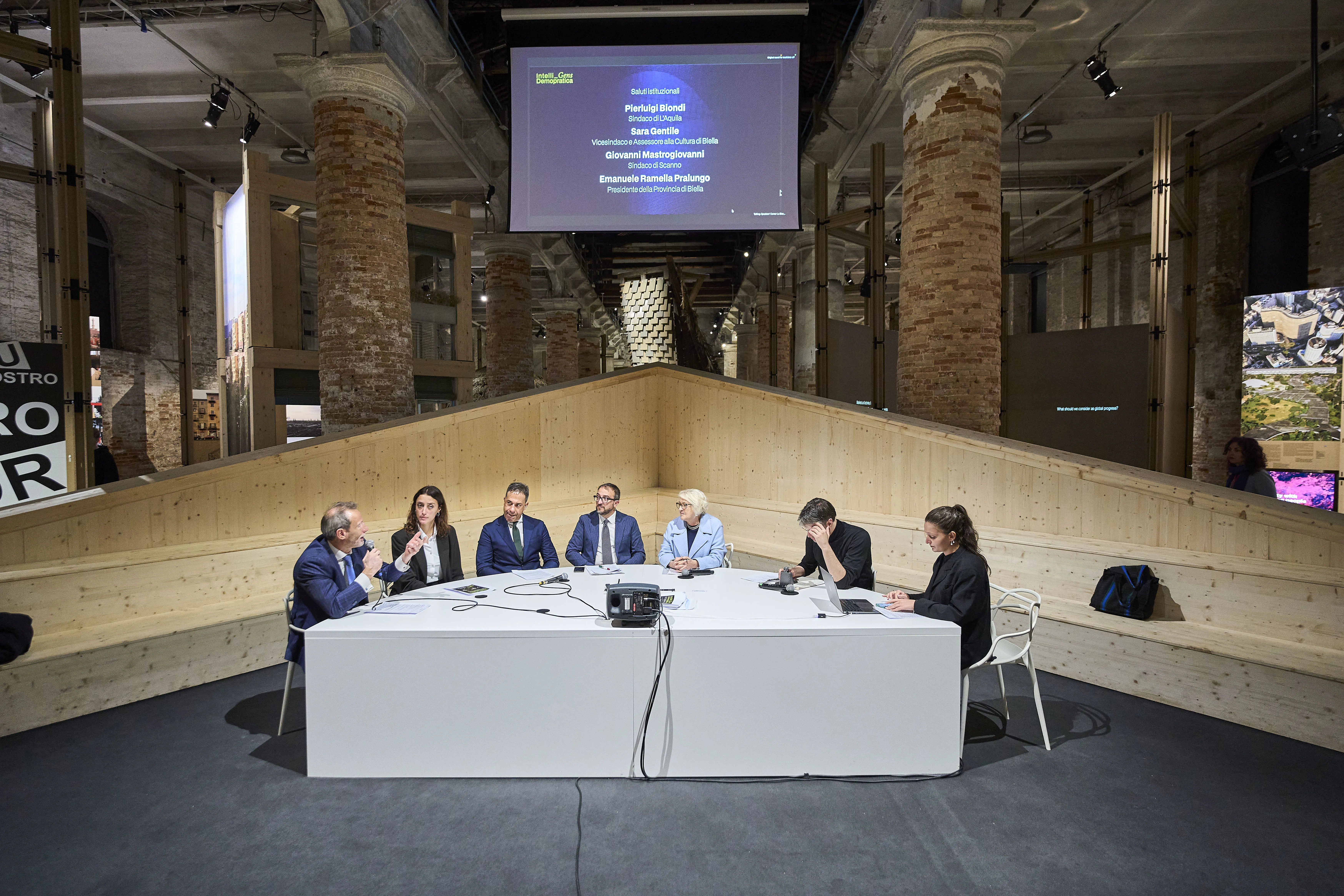
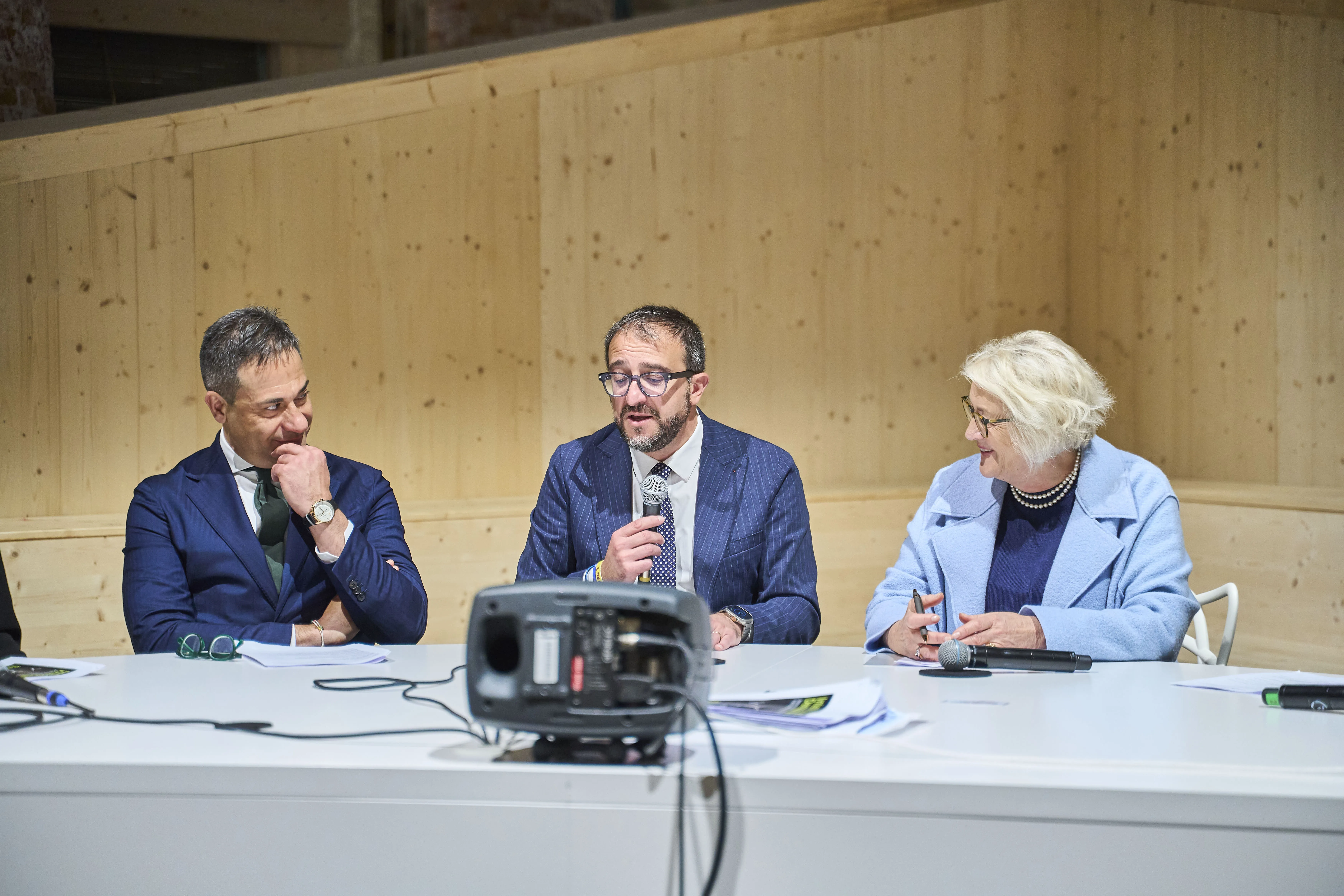
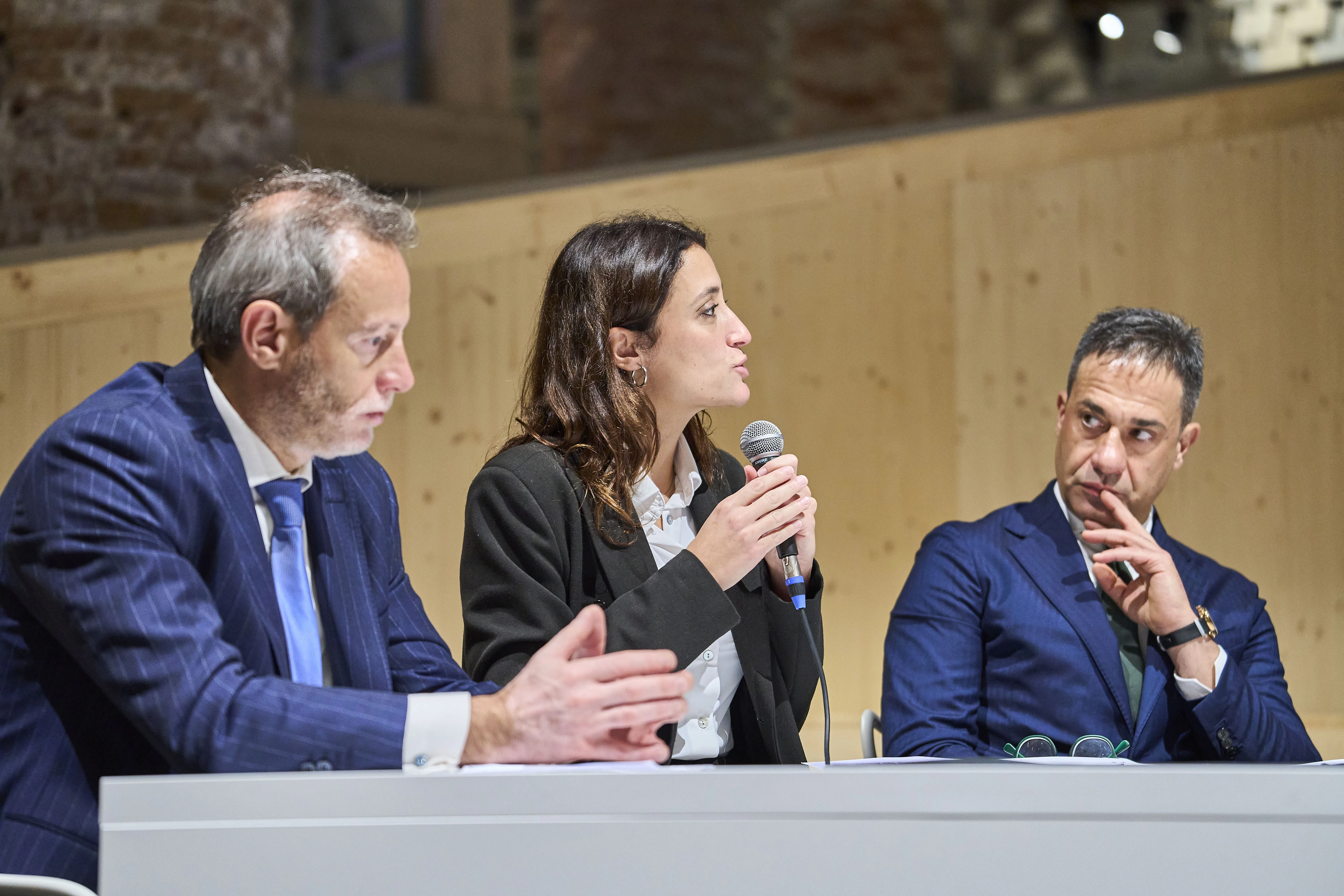
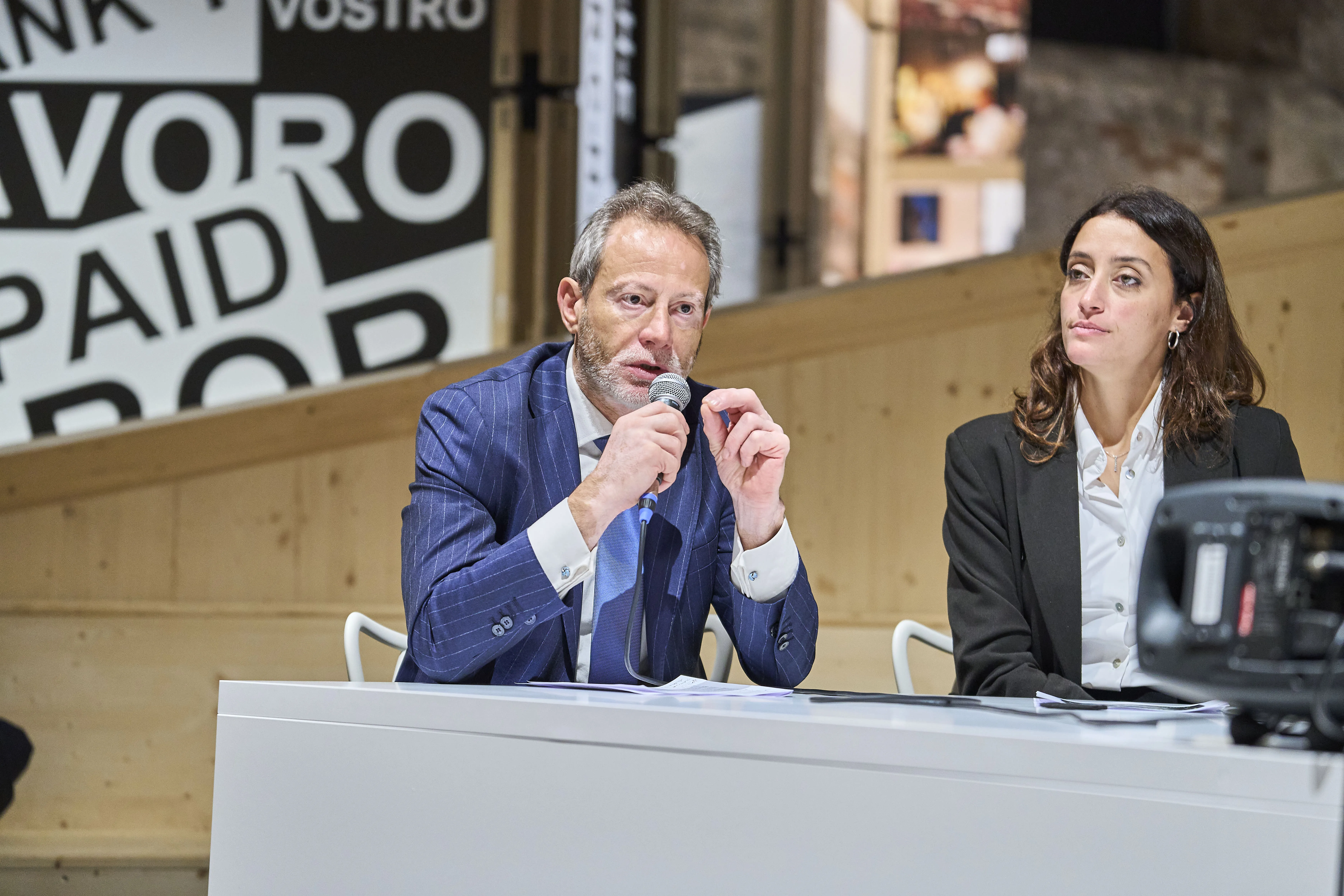
Participation of the President of the Venice Biennale Foundation
As scheduled, Pietrangelo Buttafuoco, President of the Venice Biennale Foundation, joined the speakers. He offered a reflection on the significance of the Speakers' Corner, a space commissioned by curator Carlo Ratti to host moments of dialogue and discussion within the Biennale. "This place excites me," he stated, "because it allows what is shown and narrated, even in the form of predictions, to become a living experience of knowledge and expertise, generating ongoing discussion. It is precisely this exercise of praxis that leads each of us toward inner awareness." Buttafuoco then expanded his reflection to the relationship between memory, politics, and community, emphasizing how walking in cities means immersing oneself in a collective memory, a fabric of experiences that unites past and present. Recalling the dimension of politics as a daily practice, he then acknowledged the struggle of administrators, called upon to grapple with the immanence of public opinion and guide it toward constructive practice. "It's a thankless exercise," he added, "to orient public opinion toward shared action, a practice that truly builds community." From this reflection emerged a call to transform citizens into a thinking community, capable of uniting emotion and reason. Buttafuoco cited the example of L'Aquila, a city symbolizing rebirth and cohesion after the earthquakes that struck it, where "thinking emotion has generated a new awareness of the relationship with nature and politics." His speech concluded with a provocative and meaningful statement, both a warning and a vision: "Fewer lawyers, more engineers." A phrase that encapsulates the urgency of moving from words to concrete constructions, from interpretation to creation.
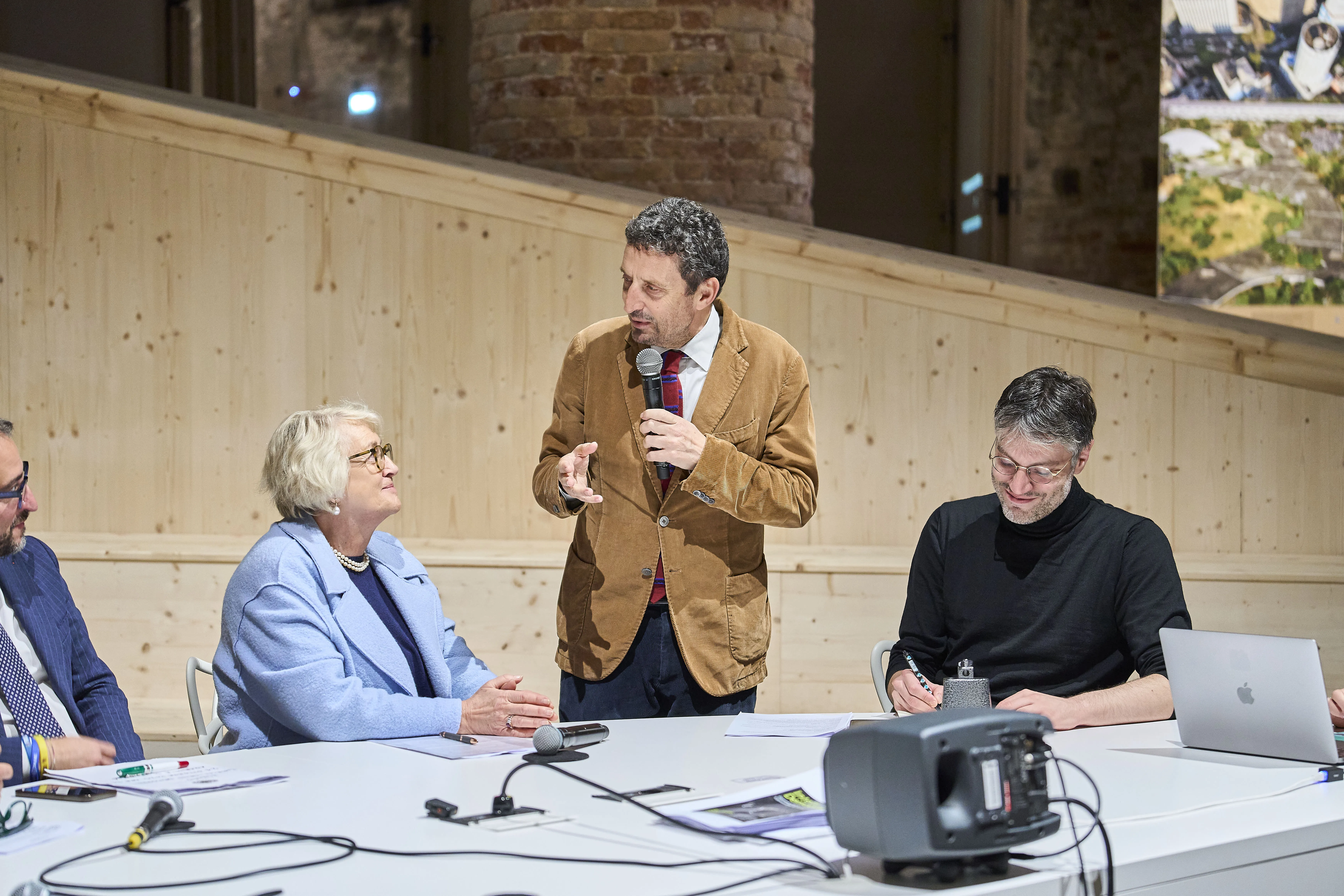
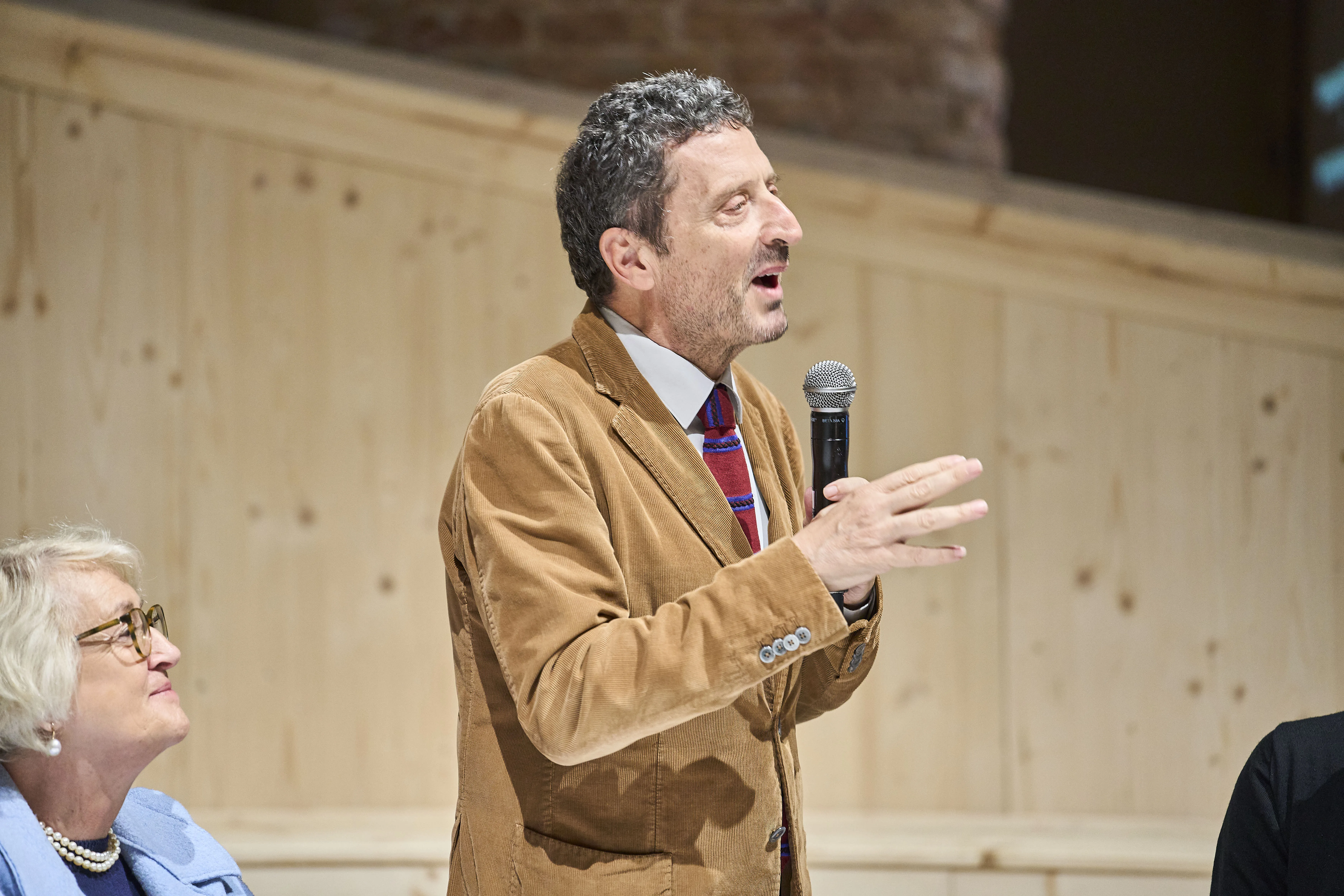
Paolo Naldini and Art for Infrastructuring the Social
After the institutional greetings from politicians, it was time for the first keynote speech of the day: Art for Infrastructuring the Social, curated by Paolo Naldini. With a passionate and reflective tone, the director of Cittadellarte opened his speech by expressing the emotion of sharing a moment that represents "a transition that, years ago, I would never have expected." Retracing the origins of Demopraxy, Naldini recalled how the idea was born within the Pistoletto Foundation, then spread and took different forms in numerous contexts, thanks to the work of many individuals and communities who reinterpreted its principles. "The utopia of the Statodellarte," he explained, "is to regenerate the civic infrastructure on which our collective life is based. We have been implementing Demopractic projects around the world for ten years now: more than forty so far, with about ten currently operational and others in the pipeline." Naldini then offered a theoretical and anthropological reflection on the very concept of Demopraxy, emphasizing how it is a term that presents a new paradigm: "When I first spoke about it, no one understood what it was. Not only did the concept not exist, but not even the word. It derives from praxis, not kratos: it is not a claim to power, but a system that regulates and harmonizes the concert of practices that constitute our lives." Demopraxy, he explained, is based on the recognition that the government of the people is exercised not only through representative institutions, but also in the daily collective practices that unite people based on the activities they perform. "We live in micro-governments," he added. "Every group, from work to school, even couples, is a form of shared government. It is in these spaces that our relationship with democracy is played out." The challenge, therefore, is to move from the era of the individual to that of the group, from the dominance of ideologies to concrete cooperation around common practices. In this sense, demopractic works become experiments in participatory governance, collective learning workshops, forums and laboratories "in which citizenship is exercised through action. This is why," he pointed out, "today we find ourselves together for the first time reflecting on what it means to truly build a State of the Art. The city is no longer enough: we need a new model of shared civilization."
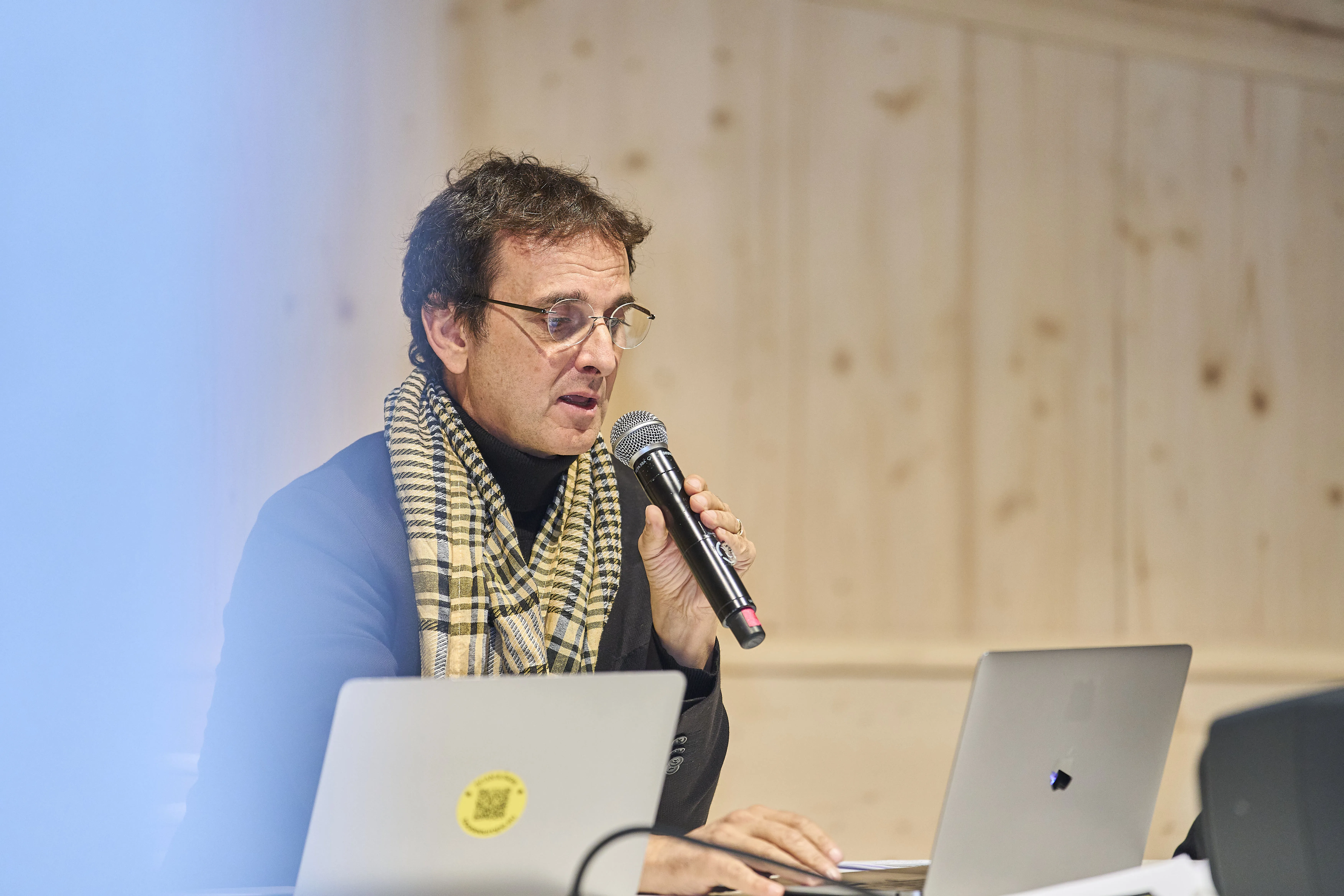
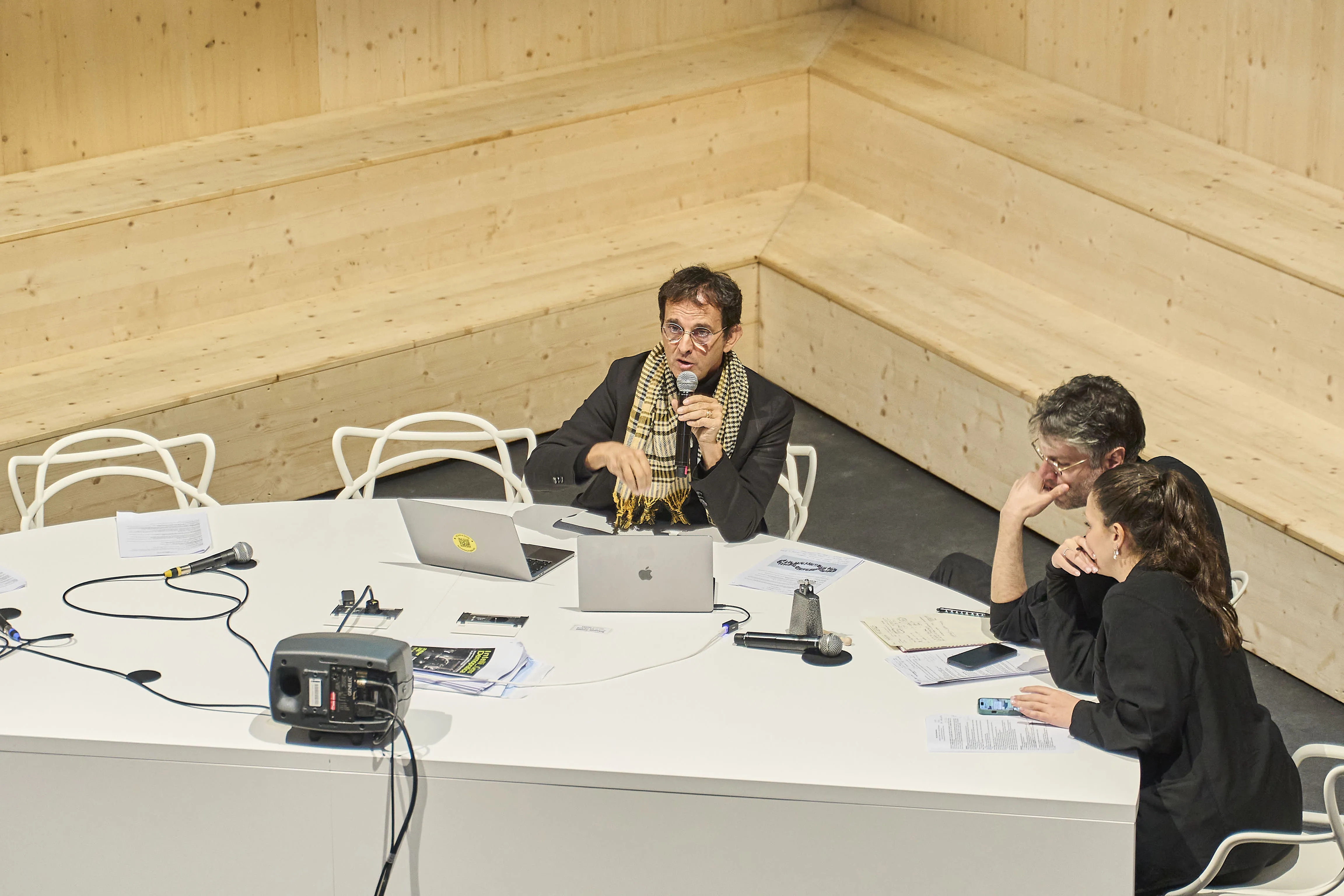
Session 1 - Challenges
The event kicked off with the first session, titled Challenges, featuring Nazarena Lanza, coordinator of Opera Demopratica Biella, along with Mario Clerico and Diana Sartori of Opera Demopratica Biella; Laura Salas (remotely), curator and coordinator of Opera Demopratica La Habana; and Giorgio de Finis, Director of the Museo delle Periferie, Azienda Speciale Palaexpo Roma, and coordinator of Opera Demopratica Roma. The discussion, moderated by Cerruti But, revolved around a series of key questions: how do you ensure the implementation and maintenance of a project? How do you support yourself financially? How do you cover expenses? How do you remunerate and recognize the work of your coordinators and those mapped? How can you maintain and broaden participation during the project? Through the Working Groups of the Sector Forums?
Nazarena Lanza opened the presentations by sharing her experience in Biella: "Our Demopractic work grew out of a pre-existing effort," she explained. "I began as a mapping entity, with Slow Food Travel Montagne Biellesi, and then, together with Alessandro Mondino of Labsus, we took over the project. A Demopractic project is not a one-off action, but a virtuous process that builds over time." Regarding resources, Lanza emphasized that "initial funding is necessary, but it's normal for it not to be enough. The challenge is for those participating to not do something different from their daily routine, but rather integrate it: we sought out local organizations already active and interested in coordinating." Giorgio de Finis then described the journey of the Rome Forum, which originated at the Tavolo del Terzo Paradiso at the Macro and was later relaunched at the Casa dell'Architettura. "The first edition of the Forum was an explosion of participation, festive and lively," he recalled. "The second was a natural development, more practical and concrete: We involved one hundred people for five days, selected ten themes, and invited organizations and citizens to jointly develop proposals to improve Rome." On the economic theme, de Finis expressed a clear position: "Art must not bow to the rules of homo economicus. Forums arise from self-organizing institutions and citizens, not from individuals seeking remuneration. Sustainability is in the sense of working together." From Havana, Laura Salas shared the experience of the Cuba Forum and the La Mina project, highlighting how the success of demopractic works depends on the constant collaboration and active involvement of participants: "We need cooperation, continuity, and mutual trust to make processes sustainable over time."
The discussion then shifted to recognizing the work of the coordinators. Here too, Lanza emphasized the concept of integrated sustainability: "Those who coordinate must find utility in what they already do: the value lies in recognizing that their daily activities are part of the process." De Finis added a historical reflection, citing the birth of the Metropoliz project: "It was born and survived thanks to volunteers. If there had been an expense reimbursement, perhaps it would have been evicted. The constant presence of artists and vocational activists has allowed us to build a museum and 150 homes over time: this is the strength of shared commitment." When asked how to maintain participation, the speakers focused on the importance of networking. "The Arcipelago roundtables," Lanza explained, "are fundamental tools for fostering continuity and discussion." De Finis then emphasized the need for broader coordination: "Cittadellarte is a strength. But creating a Forum isn't enough: we need a common umbrella that gathers experiences and verifies their results. As Pistoletto says, 1+1=3: the encounter between differences generates something new." Diana Sartori and Mario Clerico followed. The former shifted the focus to the interior and motivational dimension. ("Participation stems from motivation, both personal and collective. Years ago, I read the word 'demopraxy' and it stuck with me. Today, I understand that there's a process theory behind it, and here I felt a gift economy emerge.") The latter offered a testimony from the world of healthcare, demonstrating how care can be interpreted from a political and community perspective. ("Medicine is also politics. It's not enough to eat well; we need to be together. A healthy community is the prerequisite for individual well-being. Fragmentation, however, weakens us all.") The session concluded with the shared sense that the challenges of demopraxy lie precisely here: in the ability to transform participation into a lasting process, where economics, motivation, and responsibility intertwine in a new idea of active citizenship.
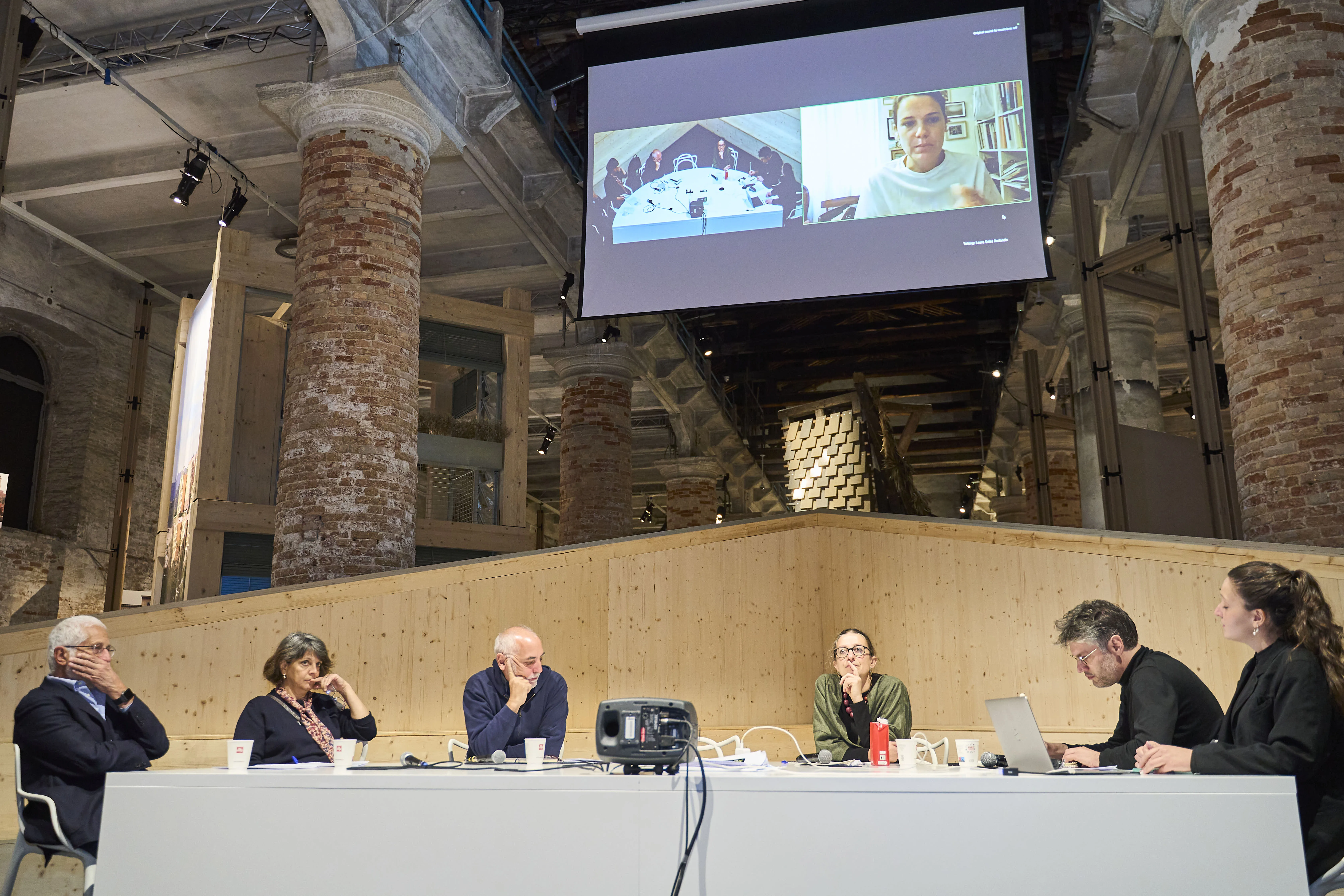
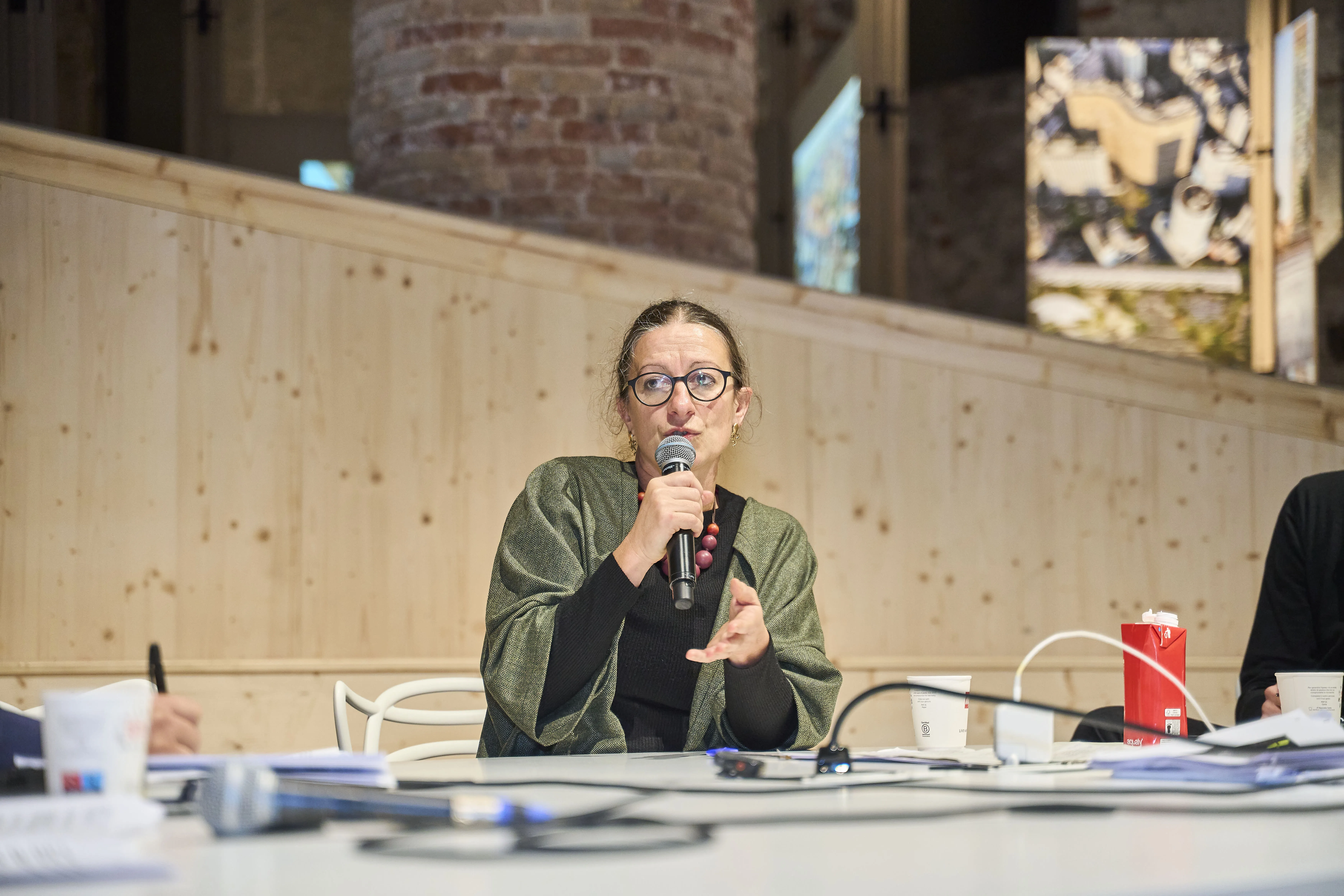
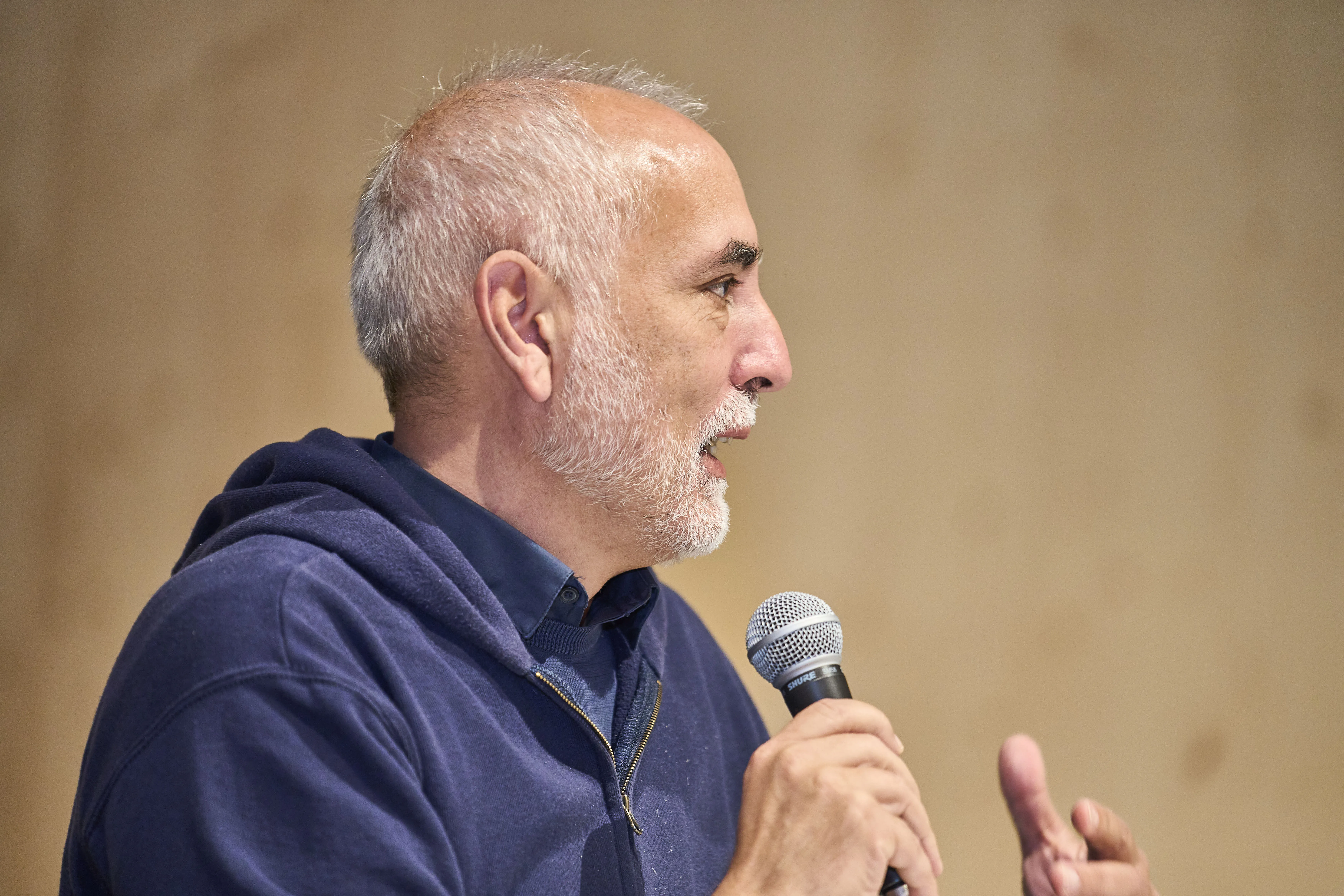
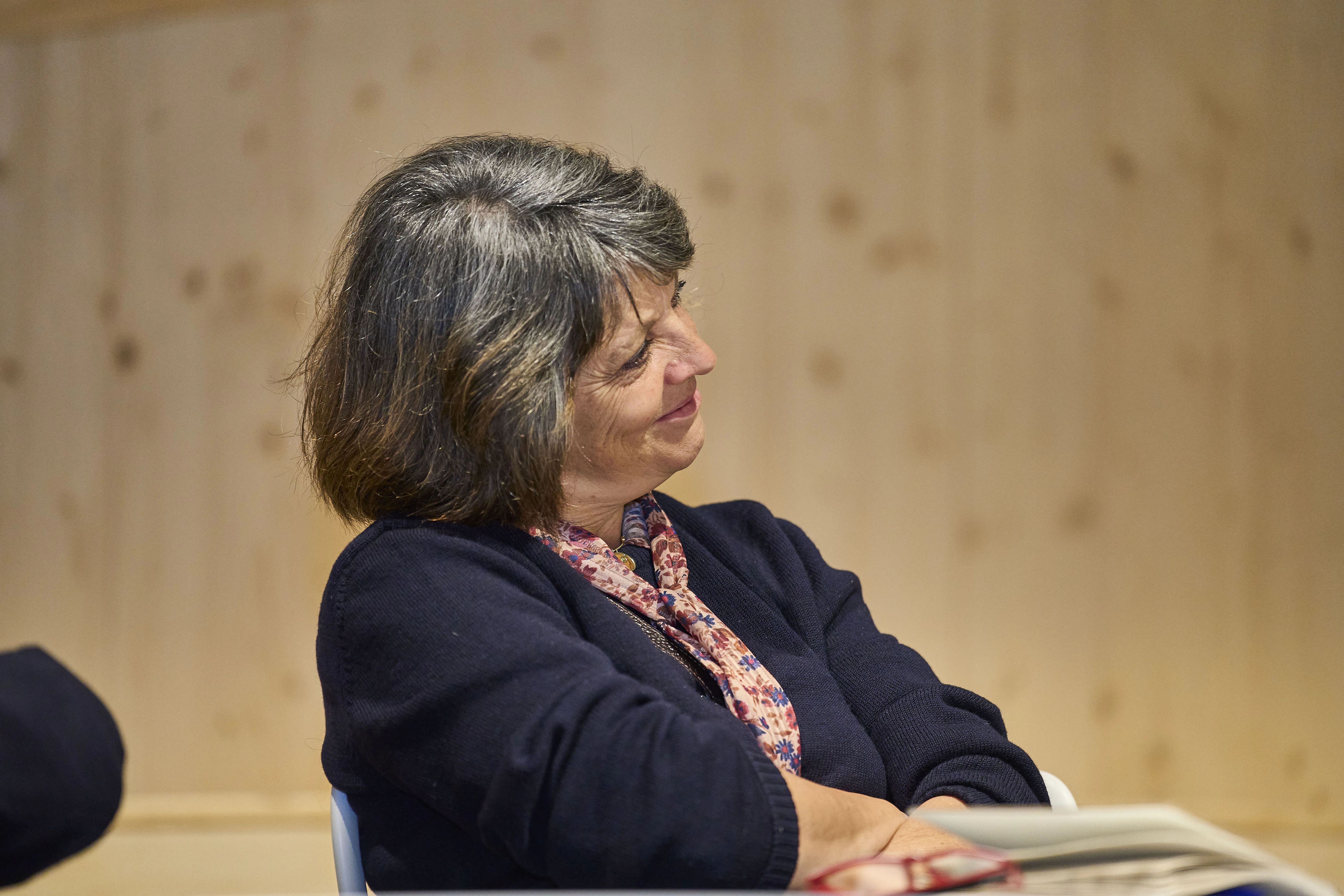
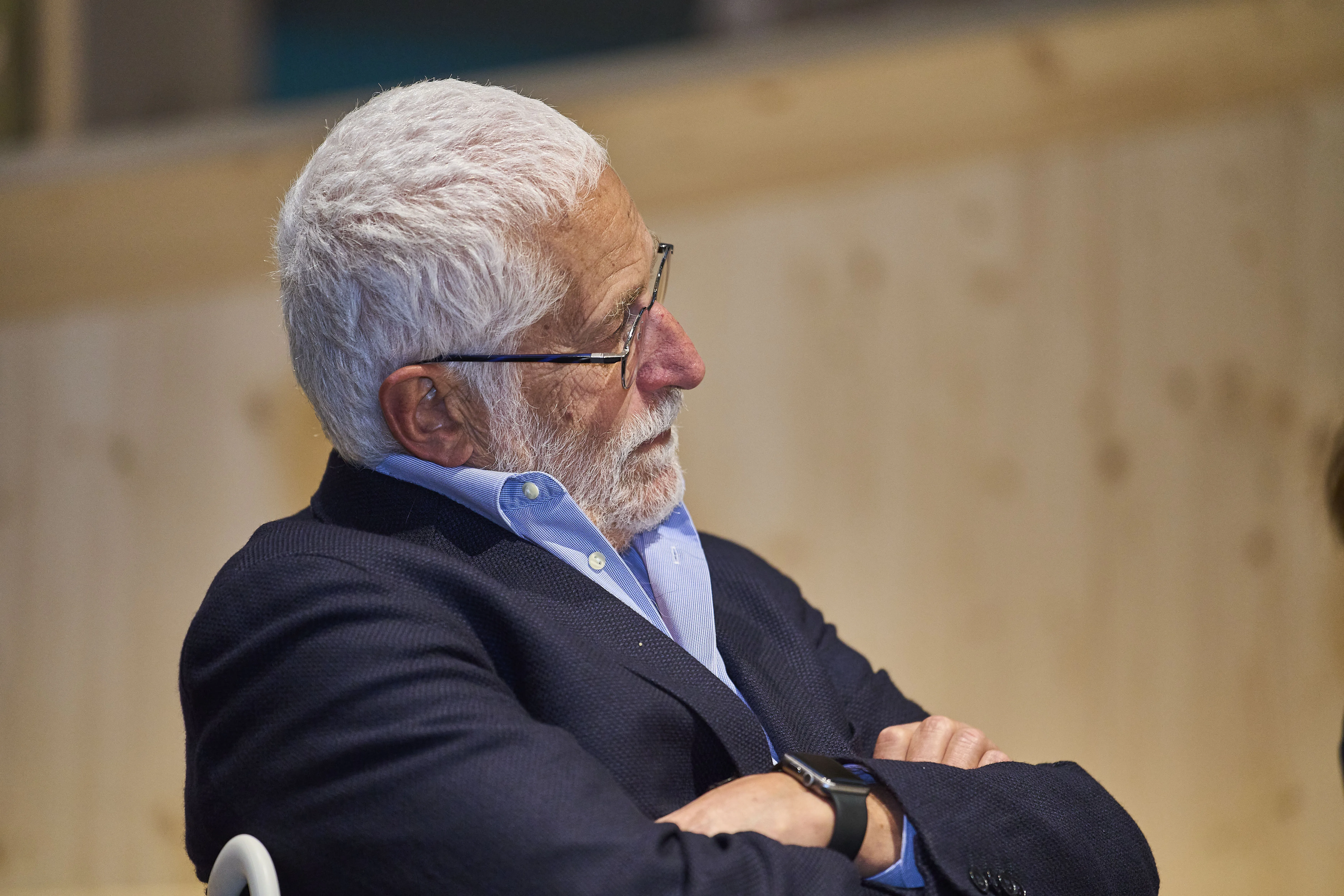
Session 2 - Projects
The second session, Projects, also addressed several key questions: what are the needs, and how long can or should the Opera Demopratica last? What is the relationship between the engagement/activation process and art, the arts, and culture? Speakers in this discussion included Antonella Muzi, professor and art historian and coordinator of the Opera Demopratica L'Aquila; Manuela Maffioli, Councilor for Culture and Identity of Busto Arsizio and coordinator of the Opera Demopratica Busto Arsizio; Franco Pomilio and Serena Tarquini, entrepreneurs and coordinators of the Opera Demopratica Scanno; and Giuliana Setari, president of the Pistoletto Foundation, who also serves as coordinator of the Opera Demopratica Scanno.
Antonella Muzi opened the session with a reflection on L'Aquila and the need for a rebirth that is primarily cultural and social. "Our history cannot be separated from what happened in 2009," he recalled. "But after so many years, we need to stop talking only about the earthquake and start looking to the future again. Activating a Demopractic Work means rebuilding a social fabric that has been abruptly torn apart." His vision is of a city that redefines itself as a community, creating spaces for encounter and participation: "L'Aquila needs physical and symbolic places where citizens can find their voice." From Lombardy, Manuela Maffioli spoke of a different yet complementary need: redefining the identity of Busto Arsizio. "Ours is an entrepreneurial city, but for years we have been trying to become something more. We express this 'more' in the form of art and culture." The Busto Arsizio project stems from the desire to transform its productive heritage into creative energy, through a series of forums, school collaborations, and interventions in public spaces. We hosted works by Pistoletto, such as the Venus of the Rags and the Third Paradise, and held four Rebirth Forums, involving schools and young people. The need is to raise awareness, to unite the city around its iconic sites, such as the Textile Museum. In Scanno, the primary need was to listen and regenerate the community. Giuliana Setari explained: "As a summer visitor to Scanno, I felt the urgency to bring new beauty to a place that was already wonderful, but that demanded participation. We didn't want an imposed monument, but a shared work, a Third Paradise that would grow with those who live there." Serena Tarquini added a more personal and emotional dimension: "During the pandemic, I fell in love with Scanno and the people who live there. They told me their desires, and from there everything was born. Empathy is the key: from listening, action is born."
When asked about the duration of the works, the answers outlined a shared vision: demopraxy has no defined timeframe, but develops as a continuous process. Franco Pomilio offered his interpretation: "We can't set a deadline. Our task is to network the local energies, create coordination and connections. This is how we build a lasting project." For Muzi, however, the memory of past actions is an integral part of this continuity. He recalled the 2014 performance, when the people of L'Aquila created a Third Paradise with construction site buckets and colored water: "A simple yet powerful gesture, a symbolic rebirth. Even today, during guided tours, Pistoletto's Third Paradise is always mentioned. It has become part of the city's collective narrative." The final question—on the relationship between participation and the arts—initiated a shared reflection on the transformative power of beauty. "Art has the ability to access the mind and heart of the individual," Setari stated. "It is a form of knowledge and responsibility." Pomilio expanded on the discussion: "Art anticipates social needs, but it's not the only tool. We need to bring the arts together; even demopraxy itself is a civic art. A work, for me, must produce other works." For Maffioli, the connection between culture and citizenship is the key to a new urban model: "We are rethinking cultural venues as spaces for participation. Culture is not a luxury, but a common good that generates awareness." The session concluded with a shared theme: demopraxy as an infrastructure of beauty, participation, and responsibility.
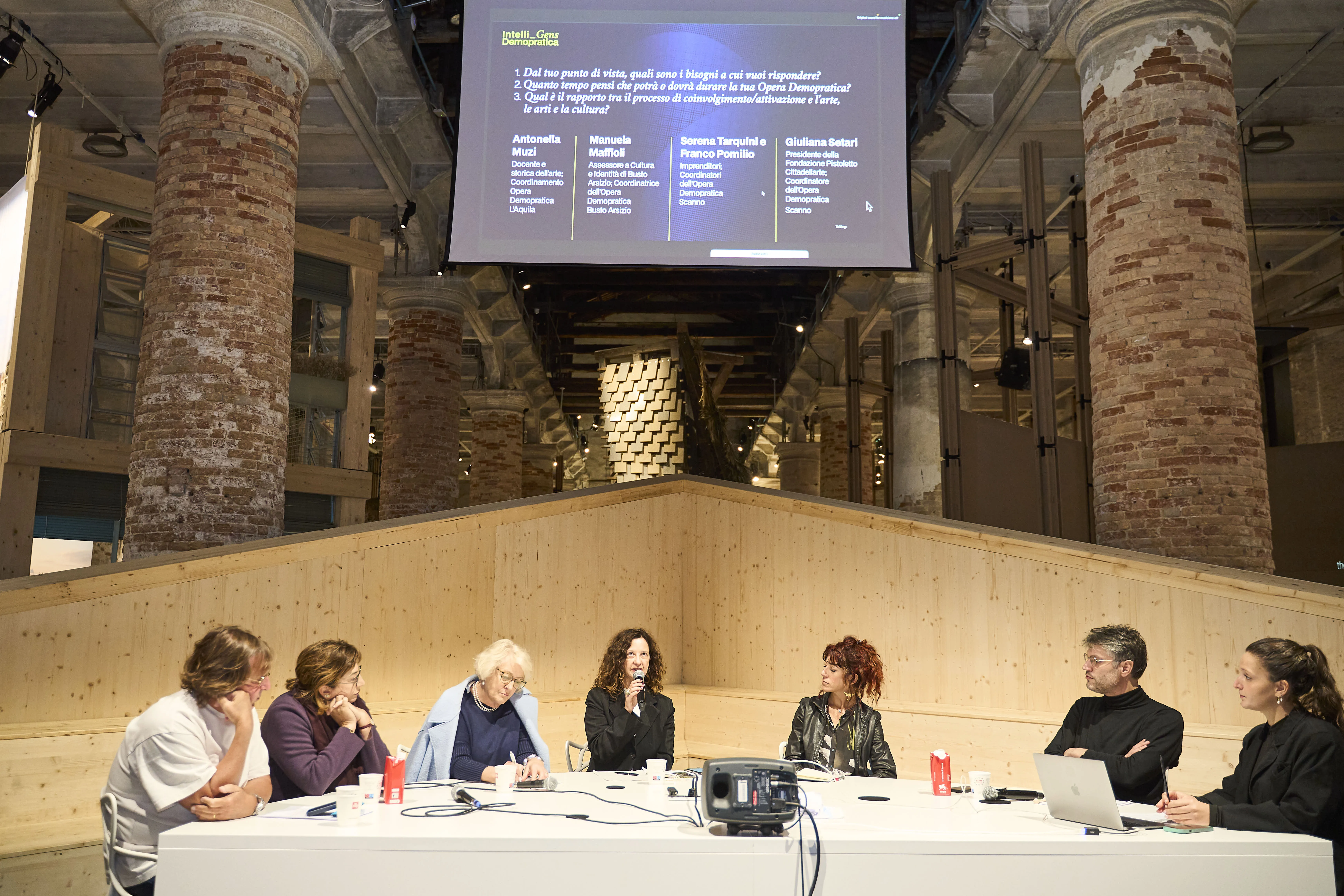
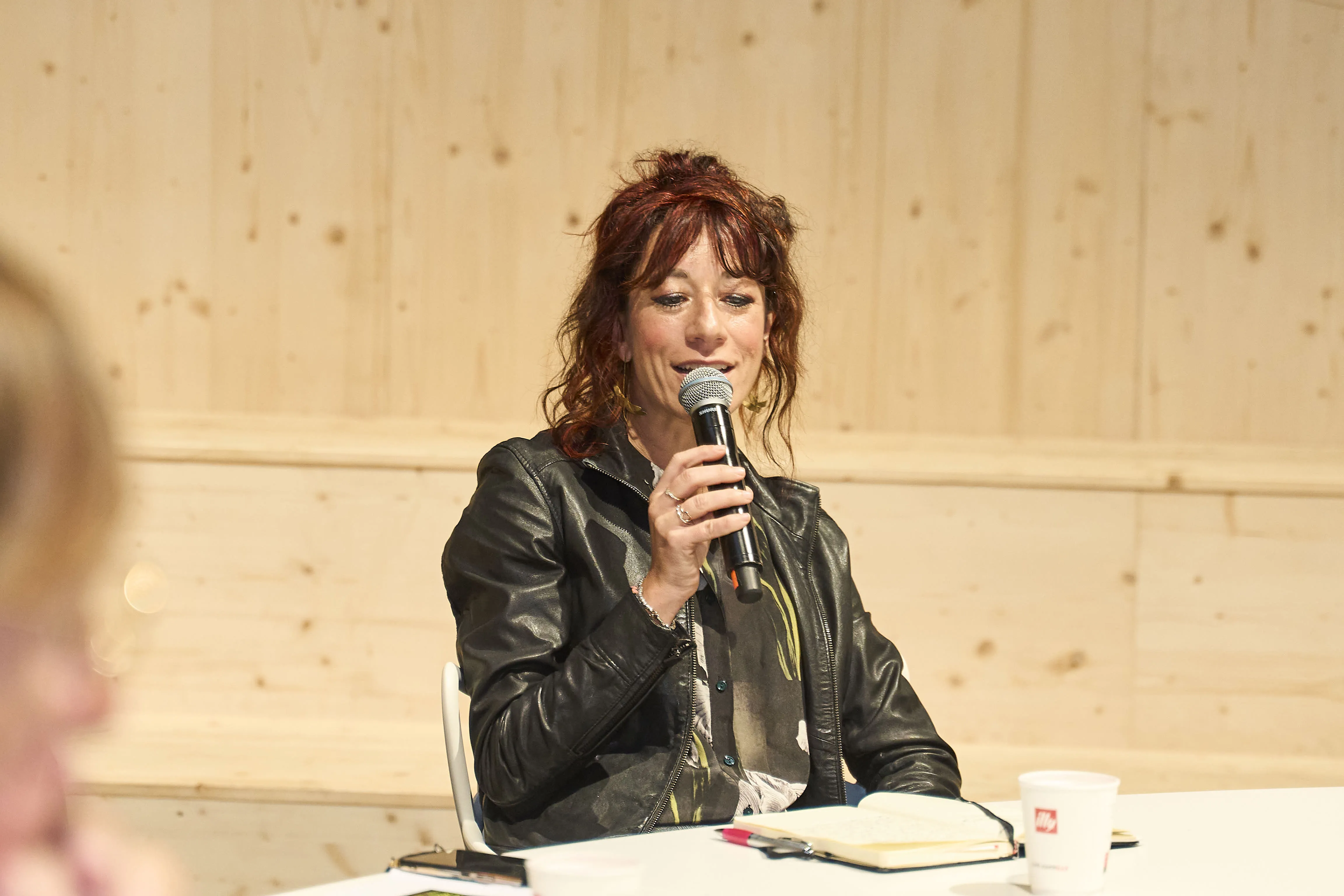
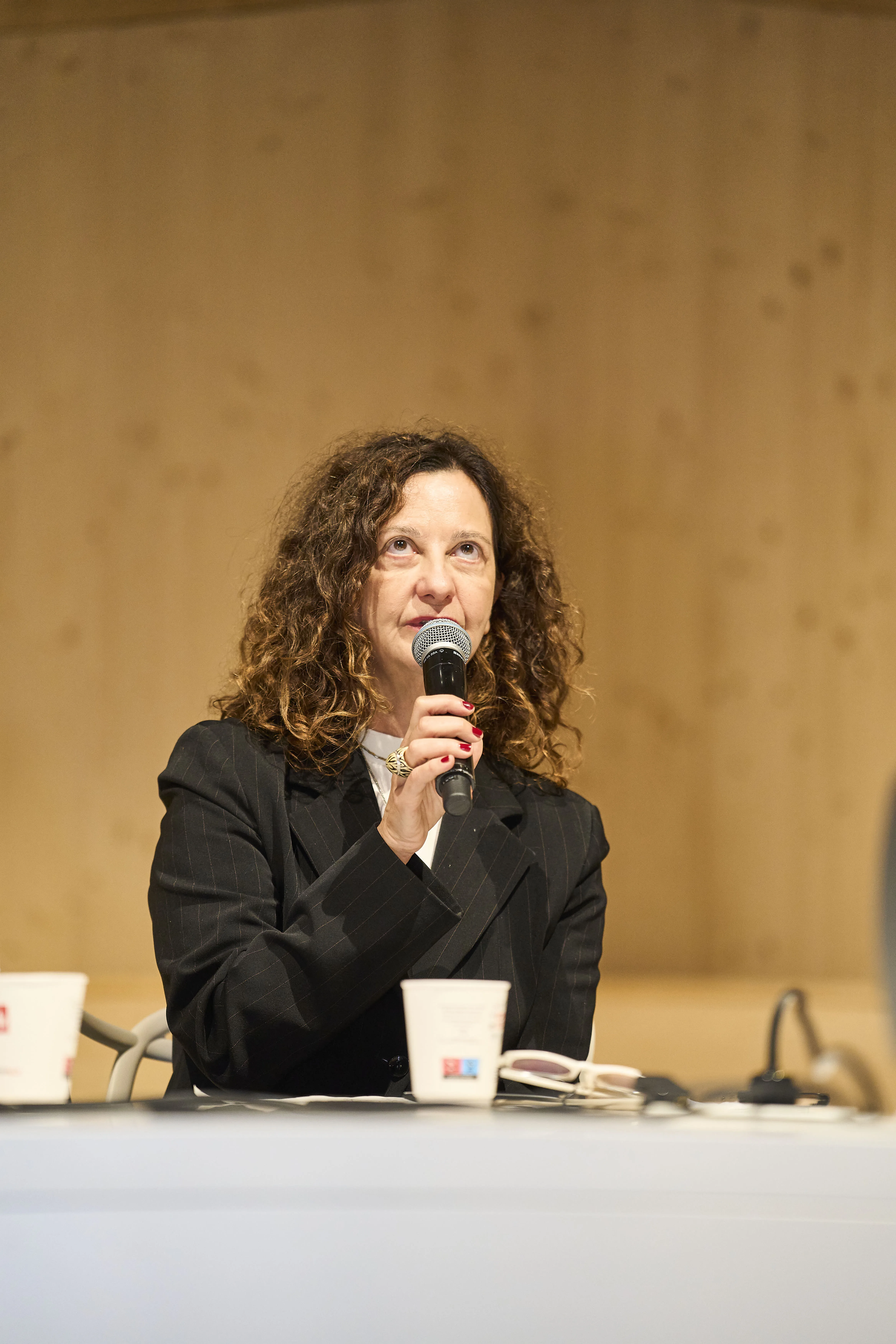
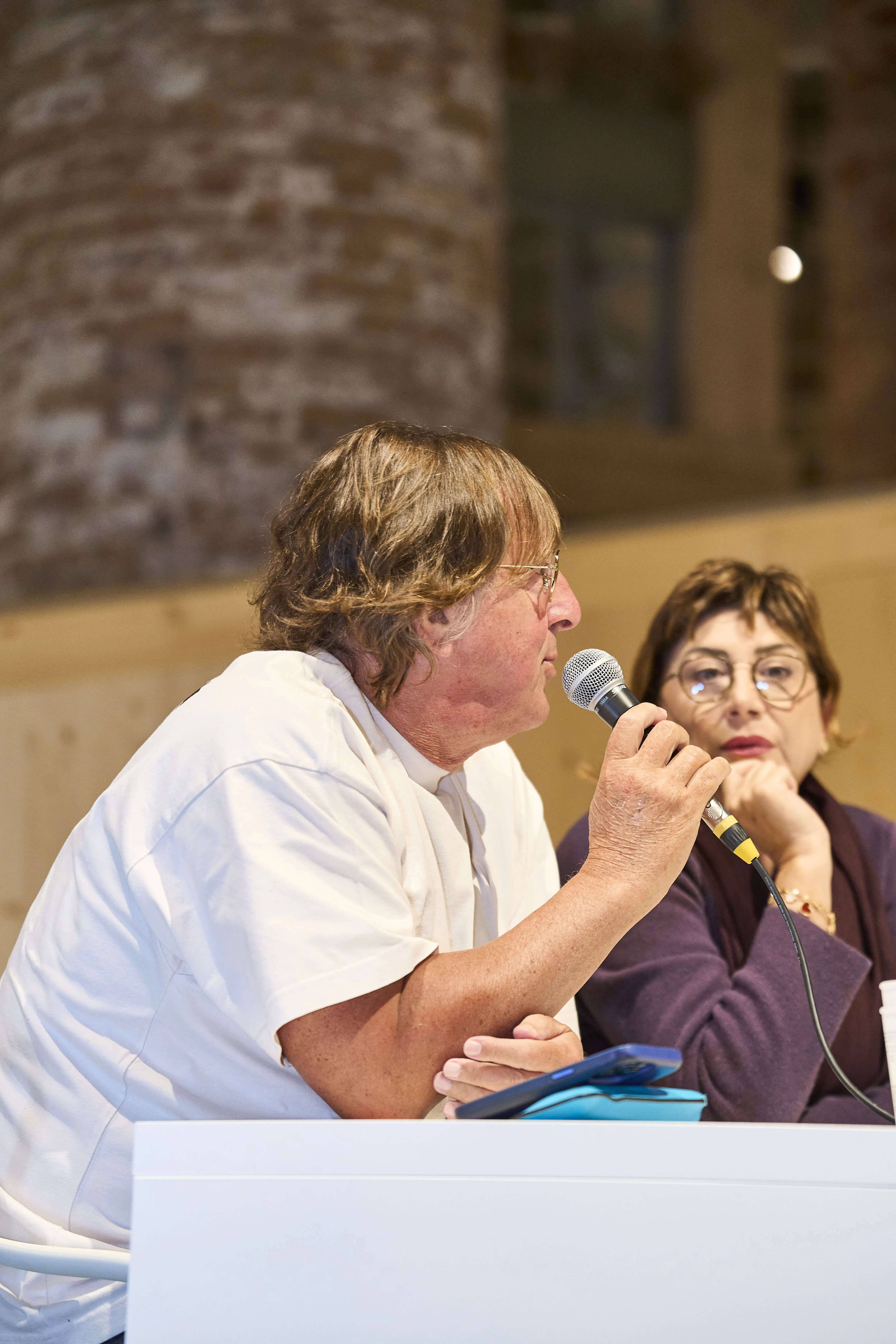
The State of Art is a Political Innovation
The second keynote speech, "The State of Art is a Political Innovation," was given by Luca Bergamo, Coordinator of the State of Art at Cittadellarte and Deputy Mayor of Rome from 2016 to 2021. He presented the Constitution of the State of Art, a symbolic and operational manifesto of Cittadellarte's commitment to promoting a cohesive and integrated civilization founded on Demopraxy. "Art is the organizing principle of a new form of political organization in which authority is shared," explained Luca Bergamo. "The State of Art does not simply evaluate the 'state of things' but organizes people and their communities of practice to redefine the very meaning of coexistence. Politics is no longer about managing power, but about nurturing the relationship between nature and artifice, between the human and the rest, between human and human in the constant pursuit of peace." Bergamo also emphasized how participation in cultural life is a fundamental mechanism for building social relations. Furthermore, he outlined the creation of the document defining Statodellarte as a civic platform structured into 92 articles, drafted "in the spirit of a constitution." This normative yet visionary framework represents a step forward in the political development of the Cittadellarte project. "It is a profound political innovation," he explained, "because it overturns the traditional principle of representation. Our Constitution itself recognizes that representation alone cannot guarantee the functioning of democracy. But it is not just a question of representatives: it is also a question of demos. The people must have direct tools to contribute to decision-making." From this perspective, representation is no longer conceived as an individual exercise, but as the function of a network of relationships, a living and interconnected system that reflects contemporary social complexity.
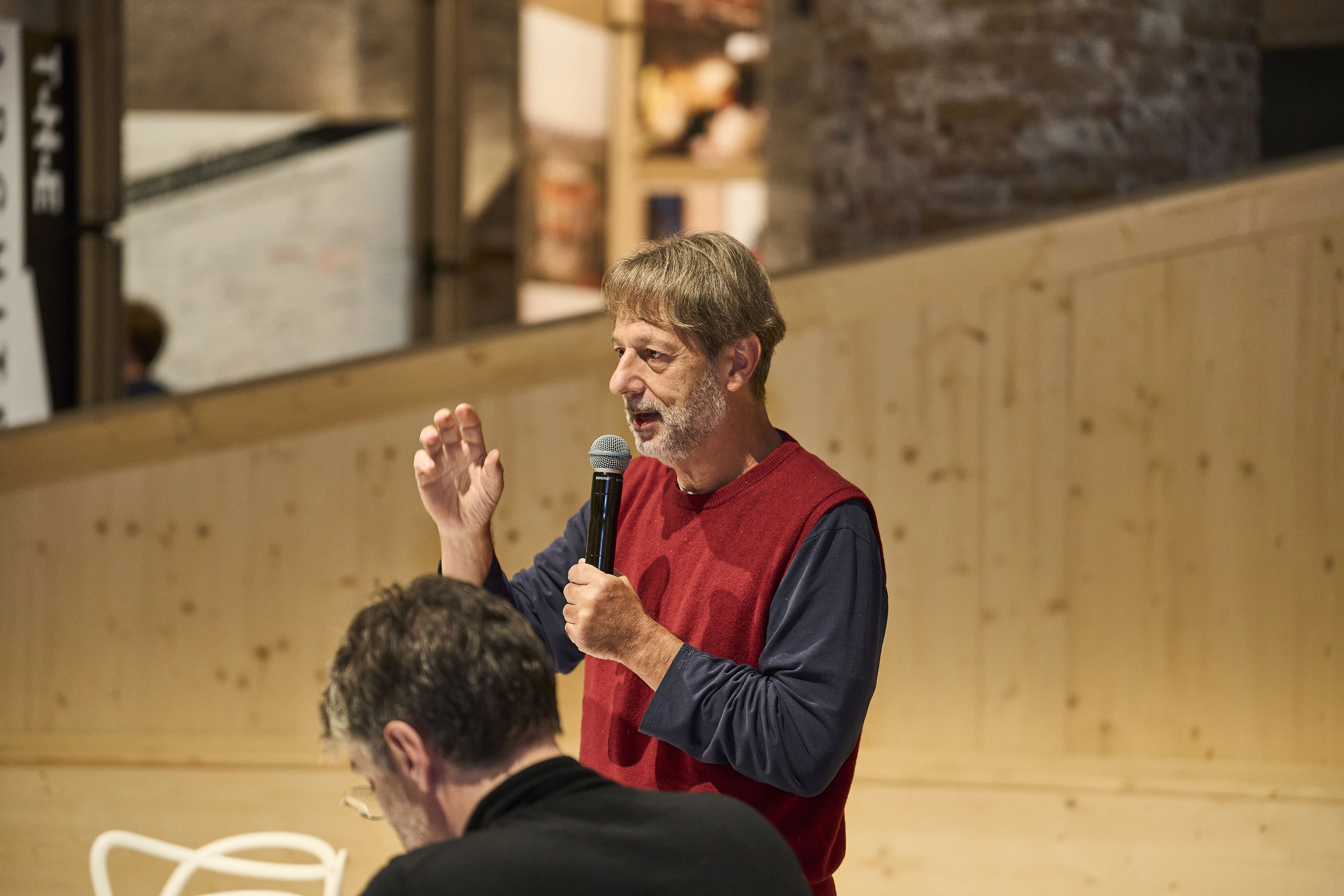
Francesco Saverio Teruzzi: From Practices to Effective Participation
The final speech of the morning was by Francesco Saverio Teruzzi, coordinator of the Rebirth/Third Paradise ambassadors. "I was there," he explained, "when an American student questioned democracy, starting with the issue of privacy. Michelangelo Pistoletto was struck by this and discussed it with Paolo Naldini. From there, like a newspaper sphere that rolls according to the push it receives, thought began to move. And today, fourteen years later, we are here." Teruzzi linked that initial impulse to contemporary challenges, evoking the fiftieth anniversary of Pasolini's death and his thought as a key to understanding the present: "PPP: practices, processes, participation. This is exactly what we are talking about." Emphasizing the concrete dimension of Demopraxy, he emphasized the need to transform narrative into action, and ideas into operational reality. "When people ask me what the Forum is, I reply that it's first and foremost a commitment. Numbers are crucial, as is clarity about what we're asking for and mapping. We must ensure that everything we do isn't just a narrative, but becomes something effective."
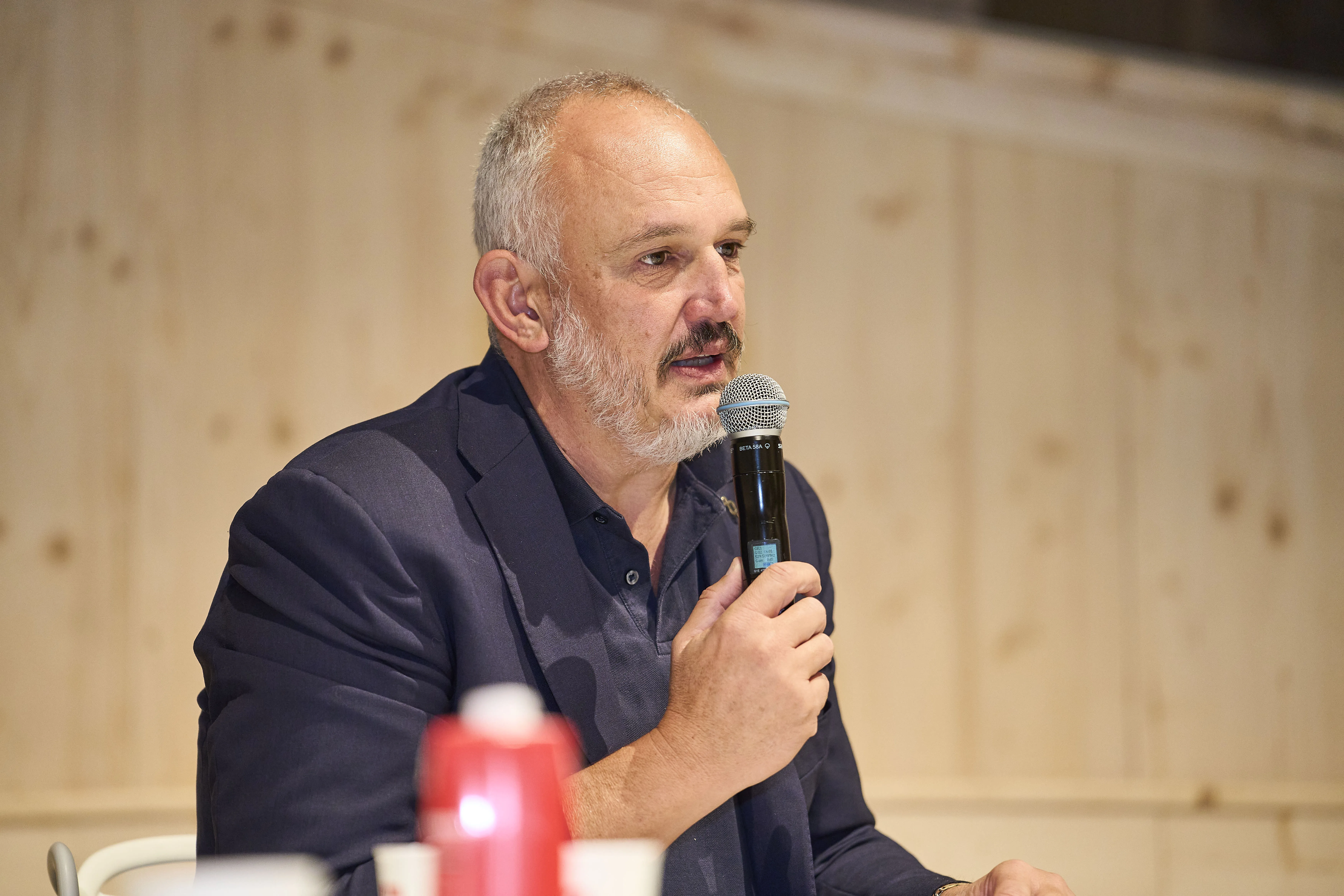
Pierluigi Sacco: Between Art and Civic Innovation
Intelli_gens Demopratica resumed in the afternoon with the third keynote speech, "Art and Civic Innovation," presented by Pierluigi Sacco, Professor of Biobehavioral Economics at the University of Chieti-Pescara, Scientific Coordinator for L'Aquila, Italian Capital of Culture 2026, and President of Bourges, European Capital of Culture 2028. In his speech, Pierluigi Sacco explores the historical and innovative connection between art and democracy, starting from the concept of "art" as artisanal skill, similar to that of the Japanese sensei. Sacco emphasizes that the modern idea of "artist" originates in ancient Greece, where art played a fundamental role in conceptualizing and resolving political and social crises, such as those generated by nascent democracy. In this context, theater, which allows us to experiment with possible worlds, becomes the ideal laboratory for exploring solutions to complex and unforeseen scenarios. "Fiction is fundamental," he explained, "because it allows us to experiment with worlds that do not yet exist." The role of artists in this period is compared to that of "authorized deviants," capable of telling stories that challenge social and political conventions, as in Greek tragedy. Sacco highlights how this connection between artistic agency and democracy shaped a model that influenced Western culture, but which, over time, was monopolized by the artists themselves. The presentation then shifted to the need to rethink the role of art in contemporary society. Sacco also analyzed the true purpose of patronage: "Patrons supported artists not for moral value, but because they needed to solve practical problems." He then emphasized the need for a "distributed artistic agency," in which art is no longer an exception, but a collective and shared element for addressing social challenges. "Demopraxy," or art as a tool for social problem-solving, represents the ambition to make art accessible and understandable to all, to jointly address the challenges of the present. In conclusion, Sacco invites us to rethink art as a tool for social transformation, no longer confined to the realm of individuality, but as a collective resource capable of responding to the crises of our time.
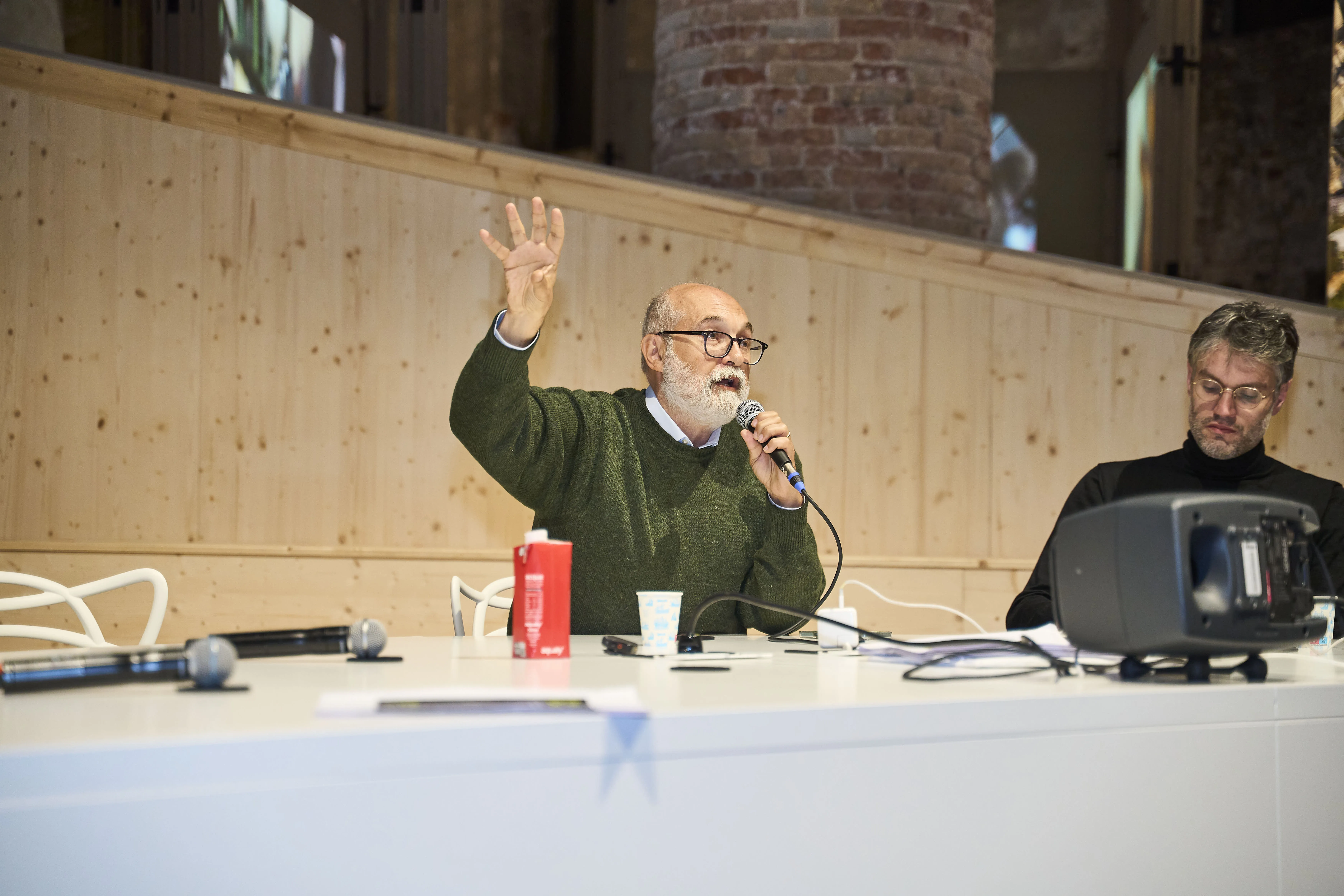
Session 3: Impacts
The third and final session, entitled Impacts, featured the following speakers: Walter El Nagar, founder of Refettorio and Fondazione MATER Ginevra, Coordinator of the Opera Demopratica; Giacomo Bassmaji, architect and Coordinator of the Opera Demopratica Nova Gorica/Gorizia; Michela Magrì, director of the Italian Cultural Institute in Seoul and coordinator of the Opera Demopratica Korea; and Andrea Paoletti, for Casa Netural and ambassador for Rebirth/Terzo Paradiso. This roundtable discussion also focused on a series of questions: "Demopratic Works are a tool for social transformation and territorial regeneration. In this session, we explore the ways in which Demopratic Works have generated results and initiatives for change. What results did you set as objectives? Which ones have you achieved, or which ones have emerged along the way? How would you extend the Opera Demopratica to other people, communities, and cities?"
Giacomo Bassmaji discussed the experience of Villa Manin, with the T3rza Terra exhibition, and the Opera Demopratica of Nova Gorica/Gorizia, a project that ideally and symbolically united two cities divided by a border, finding in art "the indelible mark that united the two nations." The initiative, realized in collaboration with Cittadellarte, engaged students and citizens in a reflection on the meaning of borders and coexistence. A concrete, if indirect, result, as Bassmaji emphasized, was the activation of a shuttle service connecting the train station to Villa Manin: "A small but significant achievement, born from a need that emerged during the working groups and was then resolved through discussions with regional institutions." Walter El Nagar, on the other hand, illustrated the path of the Opera Demopratica of Geneva, rooted in the daily life of the Refettorio and the MATER Foundation, where Demopraxy "is expressed daily." Her project connects "two populations that normally don't have human contact: the haves and the have-nots." In the restaurant, where solidarity and conviviality coexist, "the magic happens in moments of silence, when people with different histories and trajectories gather around the same table." Demopraxy, she added, "has become an infrastructure for us: first it was a lens for interpreting reality, now it is a tool for acting upon reality." Michela Magrì shared the experience of the Demopractic Work of Seoul, developed in a delicate context, in a borderland between South and North Korea. "Before bringing the Third Paradise to Korea, I wanted to 'enter' the social fabric, get to know the people, listen to the organizations." Thanks to the involvement of a local architect committed to social work, the project found a concrete dimension of collaboration and trust, overcoming the logistical and bureaucratic challenges of a complex context. The Korean forum then launched five working groups, focusing on issues of great social relevance, including combating suicide—a widespread scourge in the country—and citizens' civic responsibility. "Living in the local communities means being responsible," Magrì emphasized. "Volunteering and collaboration with local institutions are essential to truly establish a Demopractic Work." Finally, Andrea Paoletti announced the launch of the Opera Demopratica in Gorizia, which will have nine thematic groups and one dedicated exclusively to students: "We asked the younger generations to participate in the other groups as well and to translate what they hear into ideas and concepts for the first cross-border Third Paradise between Italy and Slovenia," he explained. In all the testimonies, demopraxy emerged as a practice of connection, capable of translating art into a civic process, of building bridges between cultures and social conditions, and of leaving concrete, albeit small, but lasting, marks on the fabric of the communities involved.
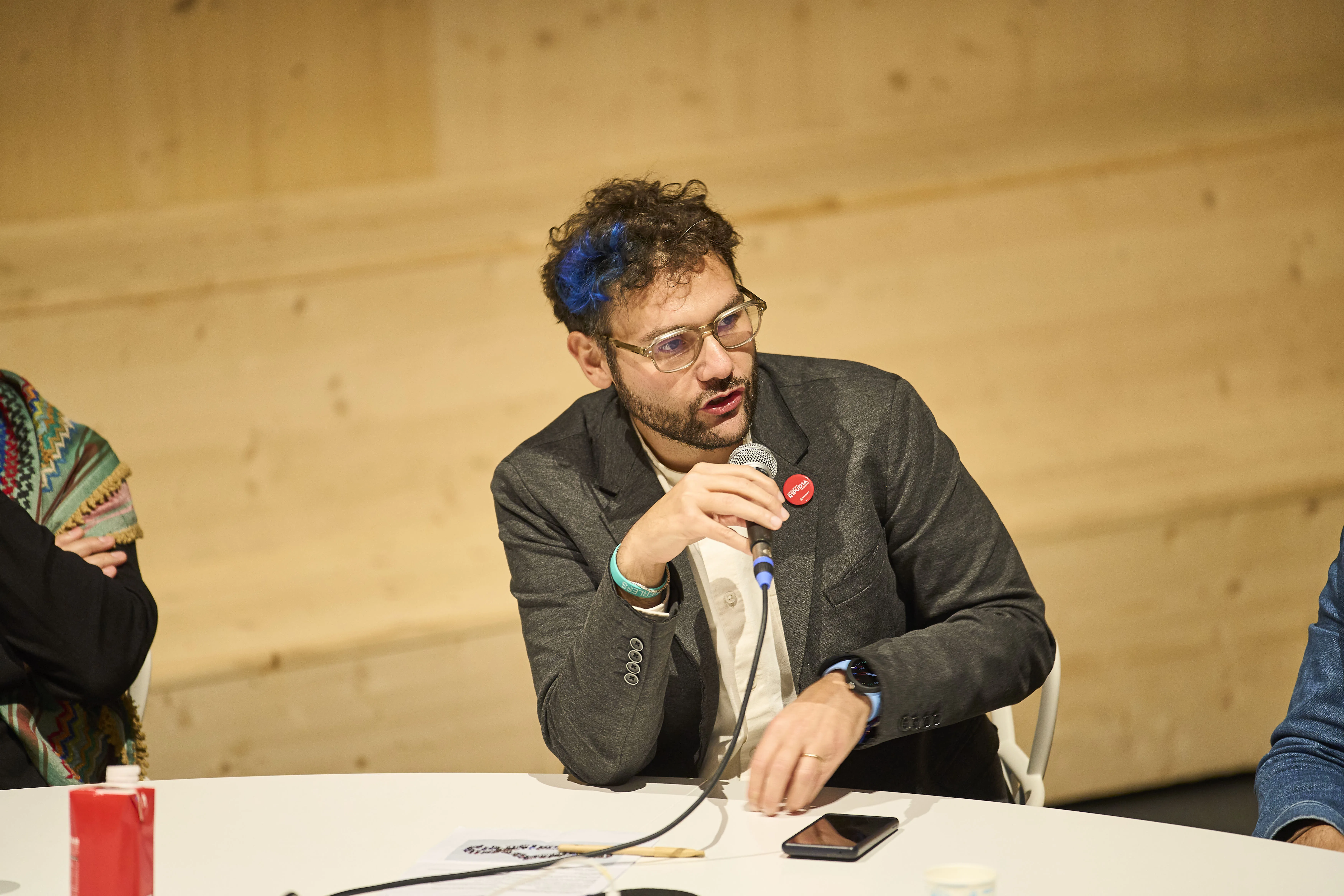
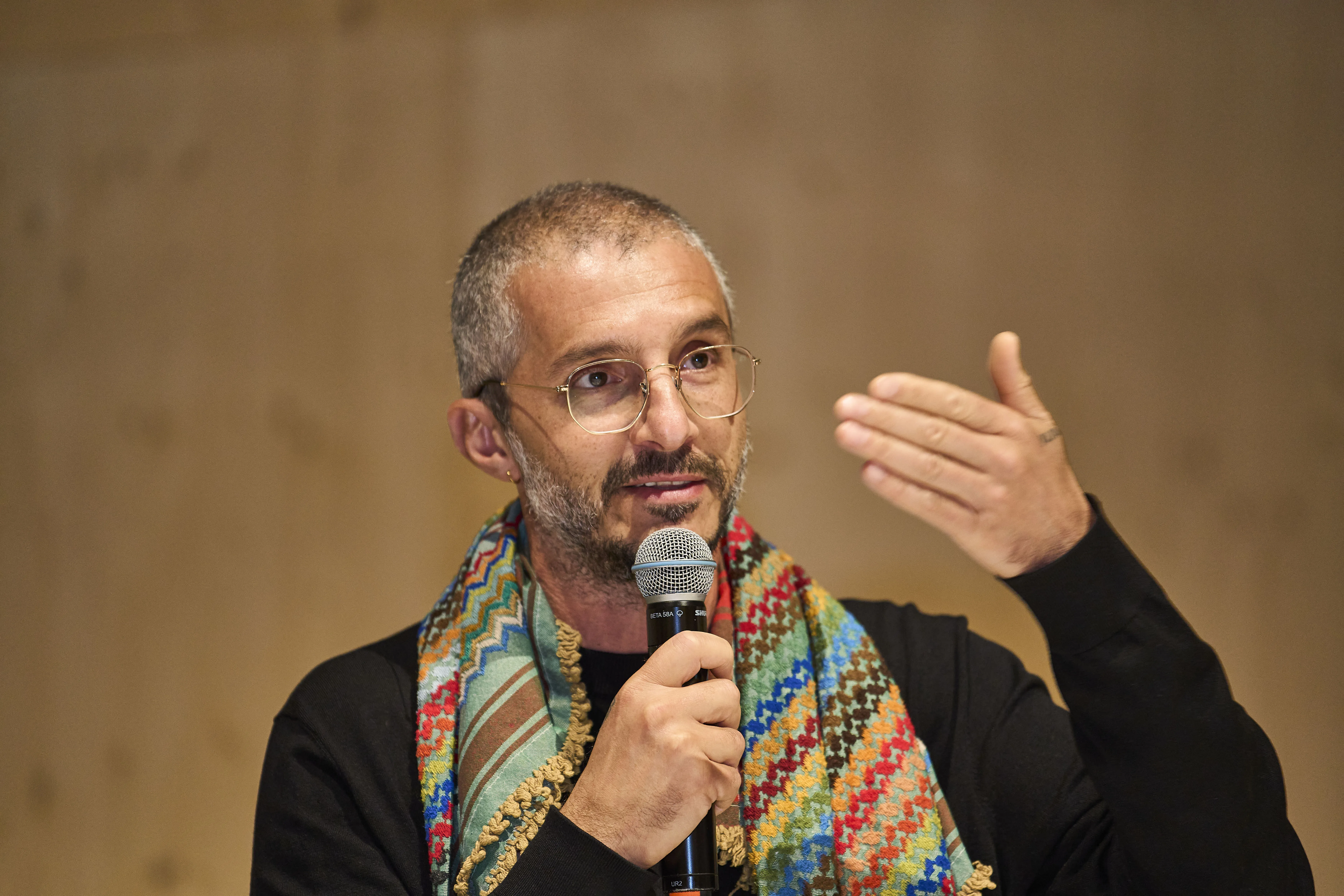
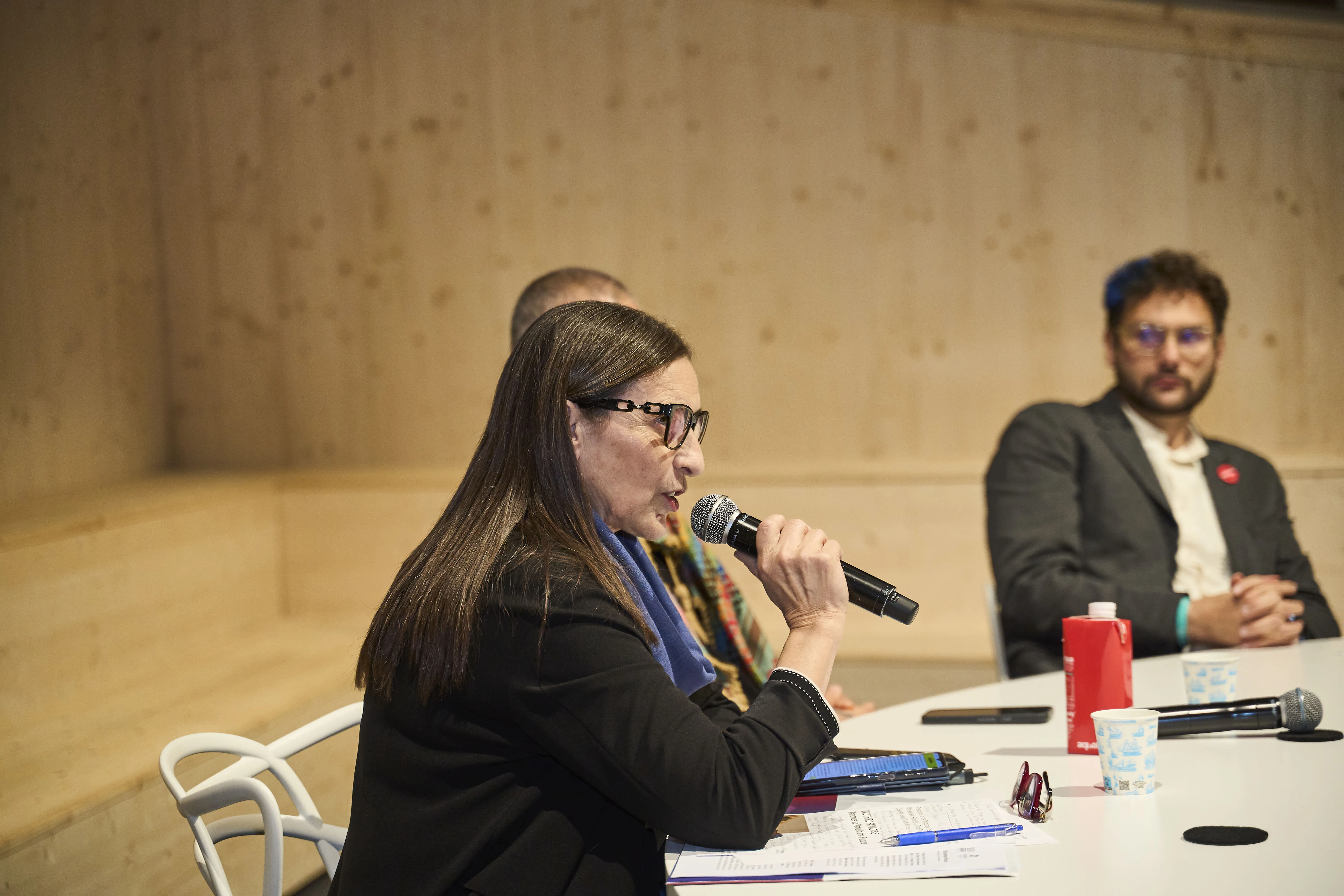
The Challenge of Shared Administration.
Mariella Stella, vice president of Netural Coop and coordinator of Opera Demopratica Nova Gorica/Gorizia, delivered the final keynote speech of the day, titled "The Challenge of Shared Administration." Stella chose to open her speech with two symbolic dates: November 1, 2003, and November 1, 2023. "Two dates, one sign," she recalled. "On November 1, 2003, I signed my first contract in public administration; on November 1, 2023, I closed that cycle, after twenty years." For her, this span of time represents not just a career, but a journey of healing. "At first, I was enthusiastic, but then I felt betrayed," she confided to the audience, acknowledging how her direct experience within the public sector had made her perceive the growing distance between institutions and citizens. From that disillusionment, she began searching for a new way of understanding governance and the relationship between communities and institutions. After pursuing a doctorate in New Public Administration, Stella founded Casa Netural in Matera in 2012, an organization that practices civic innovation, collaboration, and co-design on a daily basis. Through this laboratory of experiences, she was able to "practice" demopraxy, translating into action the idea of an administration capable of building alongside citizens, rather than above them. "I understood that our society needs a new humanism, one that puts the human being back at the center of the demopractic journey," she stated. This vision is deeply rooted in the philosophy of Statodellarte, where art, citizenship, and governance intertwine as tools for collective regeneration. "The true challenge of shared administration," she concluded, "is to return to caring for the common good, services, and territories, in a spirit of co-responsibility: not for citizens, but with citizens." His speech represented an inspiring conclusion, an invitation to rethink public administration as a relational and practical space where demopraxy finds its most concrete dimension: that of daily, shared, and generative action.
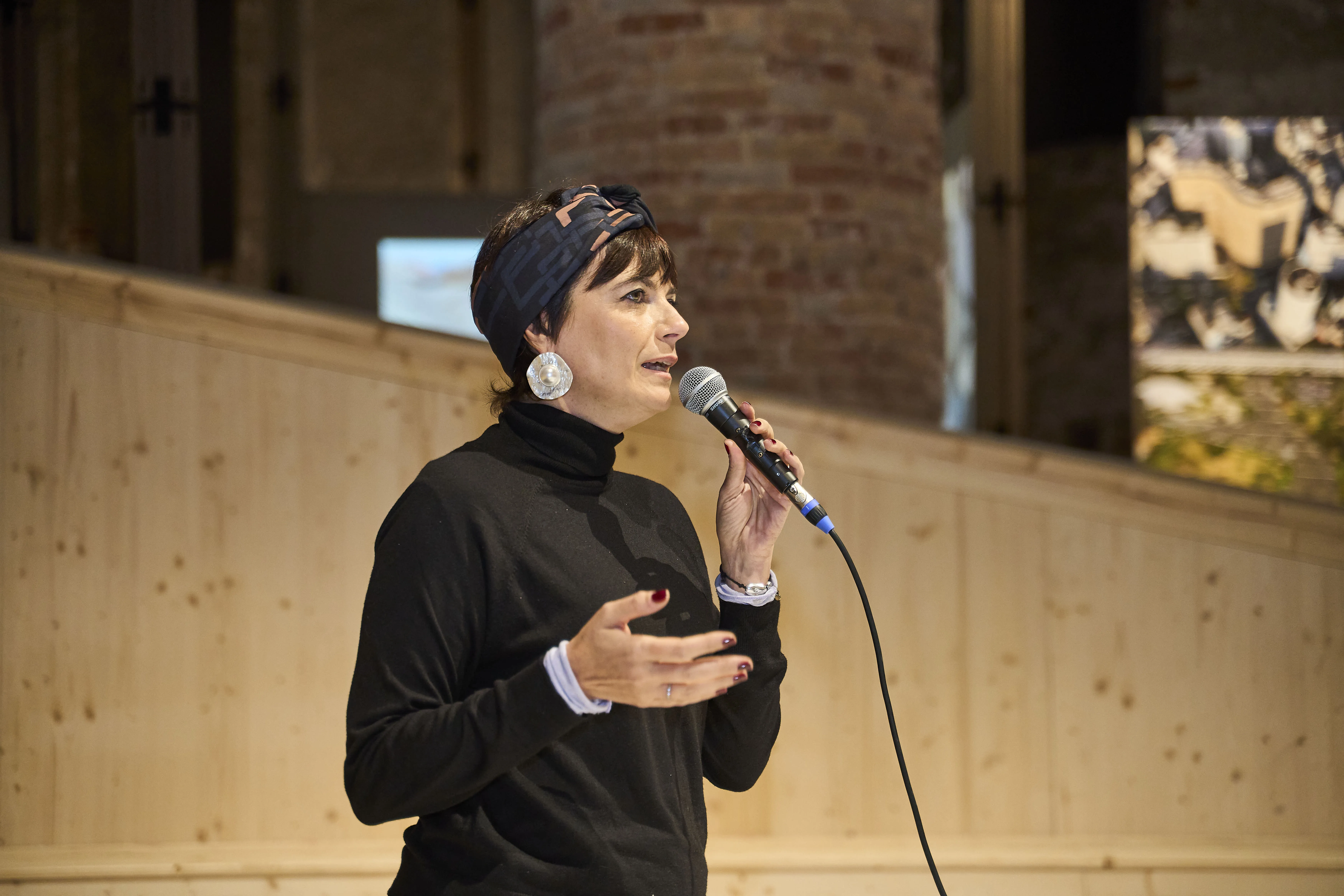
The conclusion with a summary by moderator
Michele Cerruti But, after having woven and unraveled the day's content, reviewed what had emerged. A live summary, useful for drawing conclusions and looking to the future. "We sought to explore and question the practice of Demopractic works and demopraxy in general." To summarize the day and "unite" the contributions, he examined some key points. What is art? "Art functions as a symbol in Demopractic work; it is something we can identify with. Art is also expenditure; it doesn't fit within logic. Art reveals and enables people to think. Art supports critical thinking." The second point touched on was the critical approach: "Almost everyone, when talking about the approach, used words like 'ambitions,' 'courage,' retracing their own personal history. There's an approach that begins with a personal commitment to the desire for change, imagining a more harmonious future and considering the possibility of change." In short, it's not art for art's sake; there's always an intention to work through art to transform: "Working on engagement means engaging with people's experiences." His presentation concluded with a focus on demopraxy.
What is it? "It's a form of empowerment of relational sovereignty, of the people. It's a sovereignty that changes the meaning of the demos. Demopraxy is the awareness of this possibility of governance. Engagement works if we are able to foster awareness. Demopraxy is also an infrastructure... and it produces it."
And what does it do? It interconnects and connects, brings organizations together, allows things to function, and distributes creative functionality. It even shifts paradigms: this idea embodies the realization of everyday utopia, and it does so by supporting democracy, not replacing it.
How does it do it? "By working within," he concluded, "the dimension of continuity. The challenge of this Biennale, in fact, is not to bring best practices but ongoing experiments, attempts to find answers. It does so through listening, which is a dimension of creation, and with perseverance. It is not a proposal, but a phenomenological observation, which needs to be made visible and strengthened." The day concluded with questions from the audience and greetings and thanks from the director of Cittadellarte. Paolo Naldini made no secret of his emotion: he, the "father" of demopraxy and its method, has seen his creative son become a benchmark for social innovation, sustainability, and responsible change throughout the world. Almost 15 years have passed, but it is only a (new) beginning.
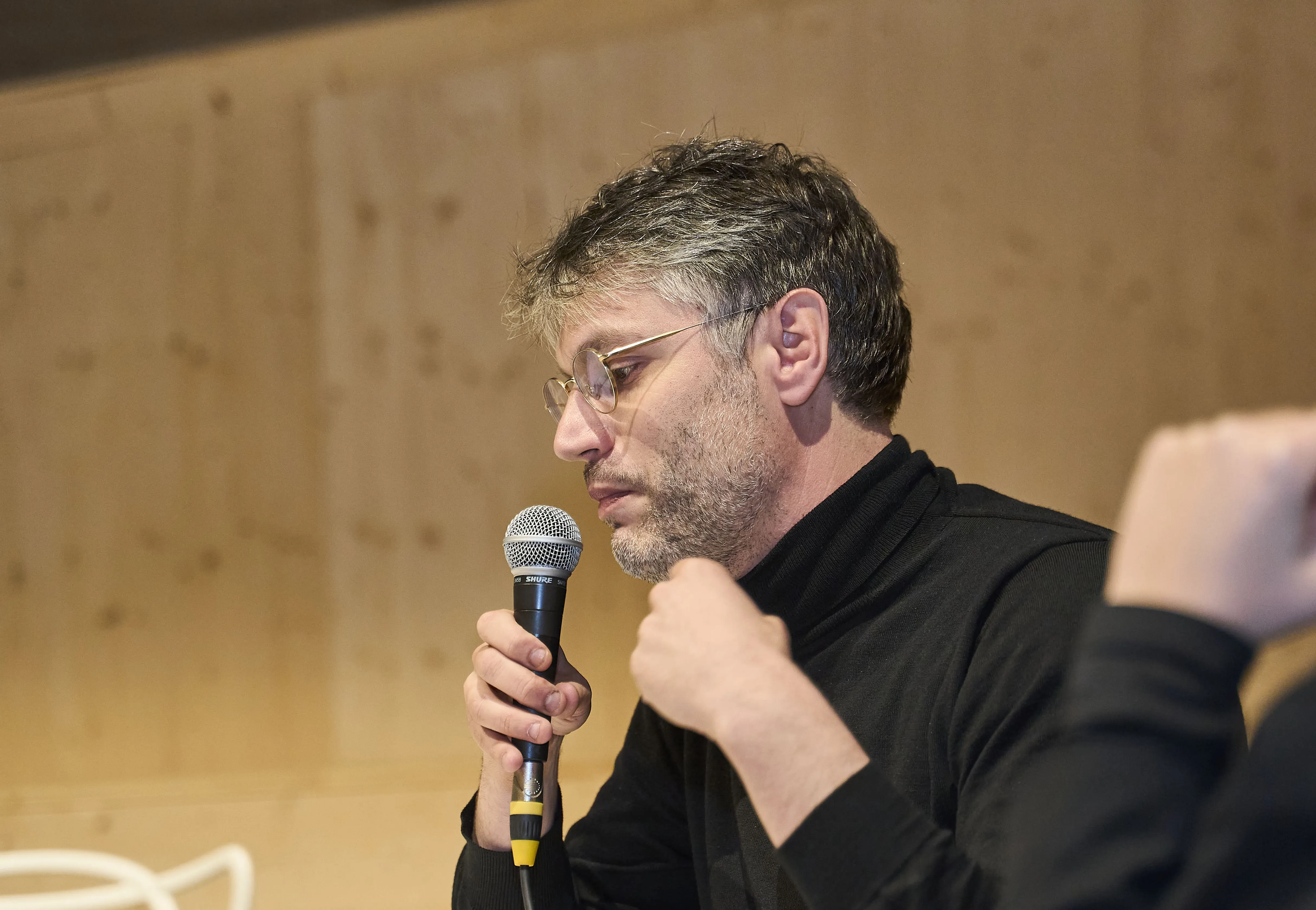
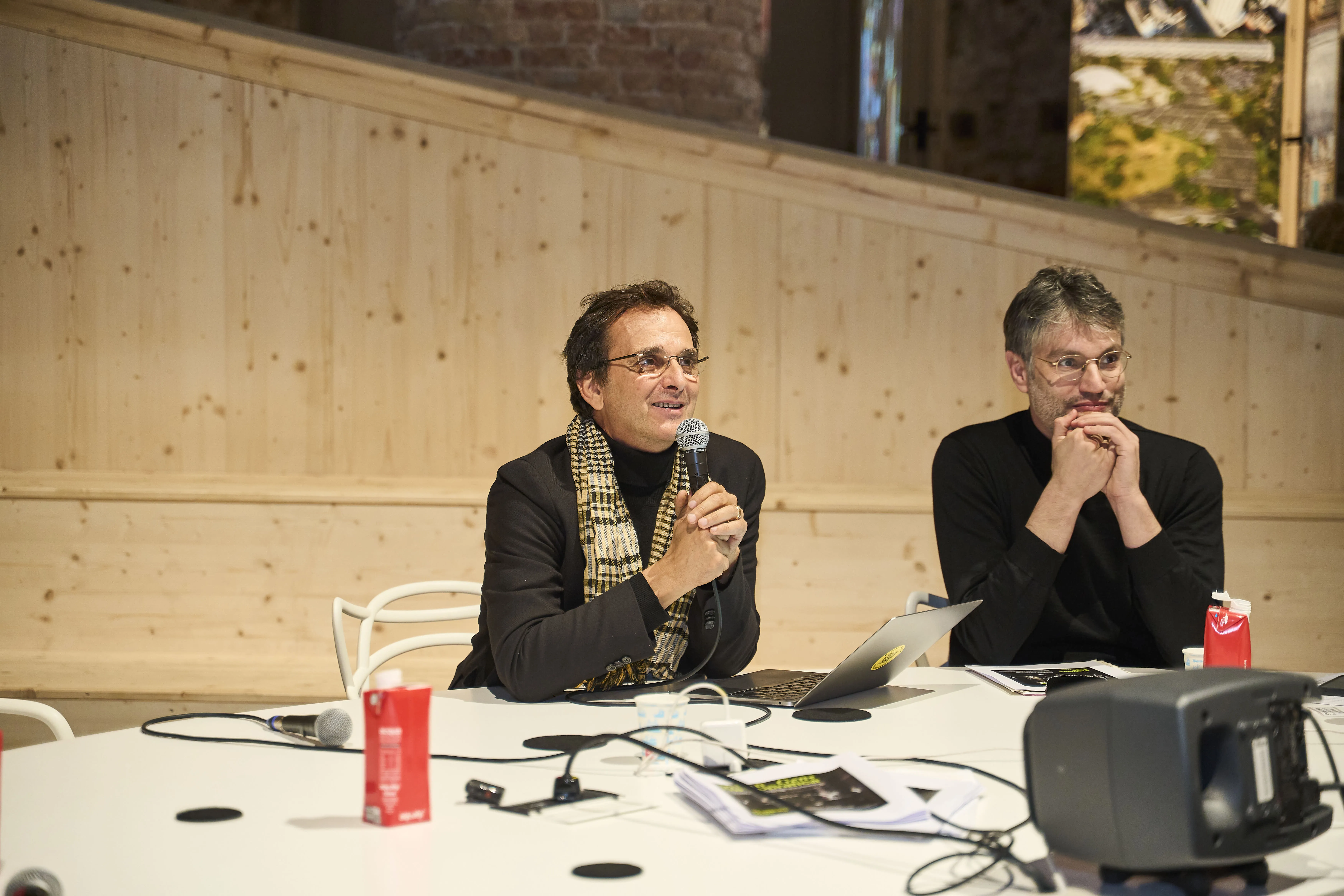
Photo credits: Social Valet.
